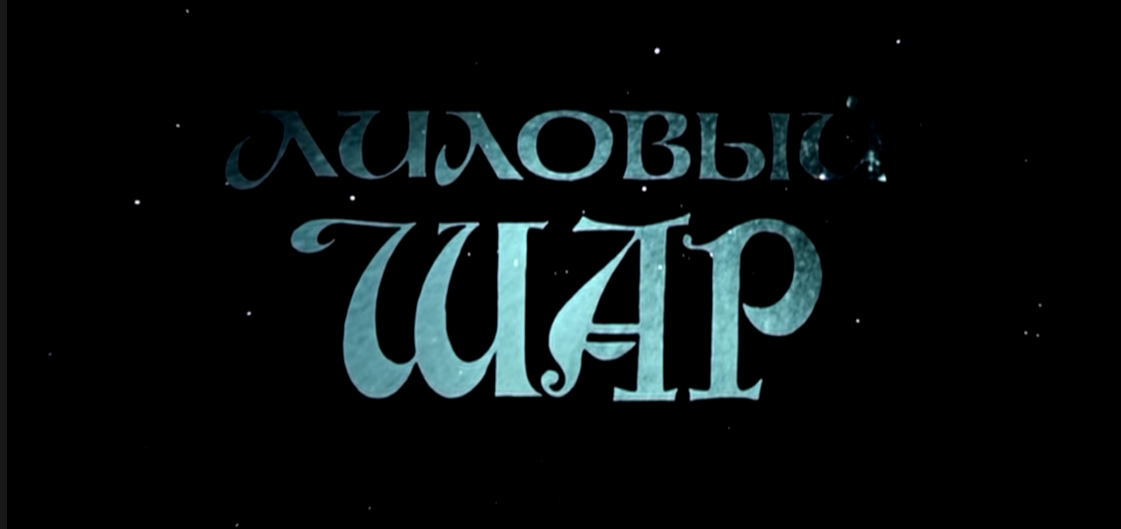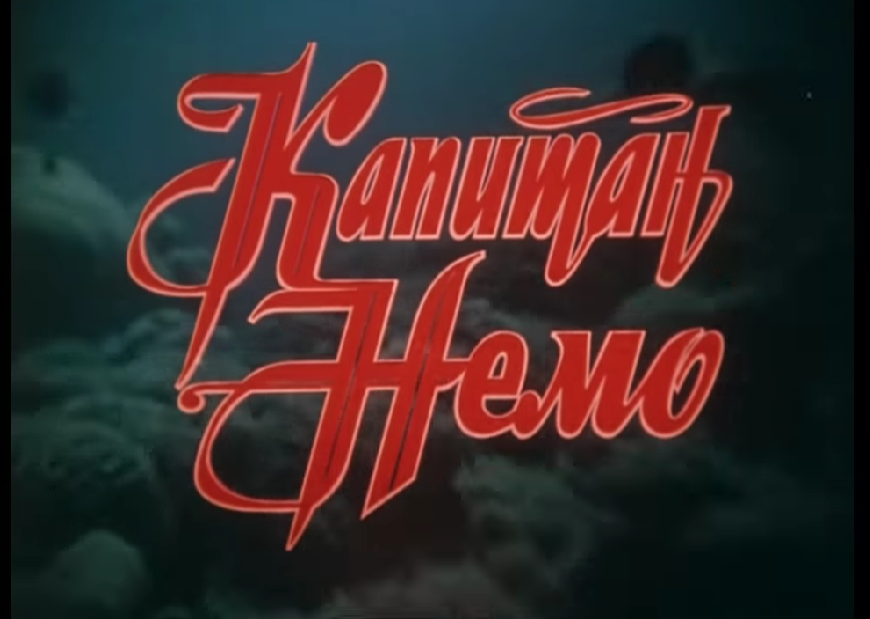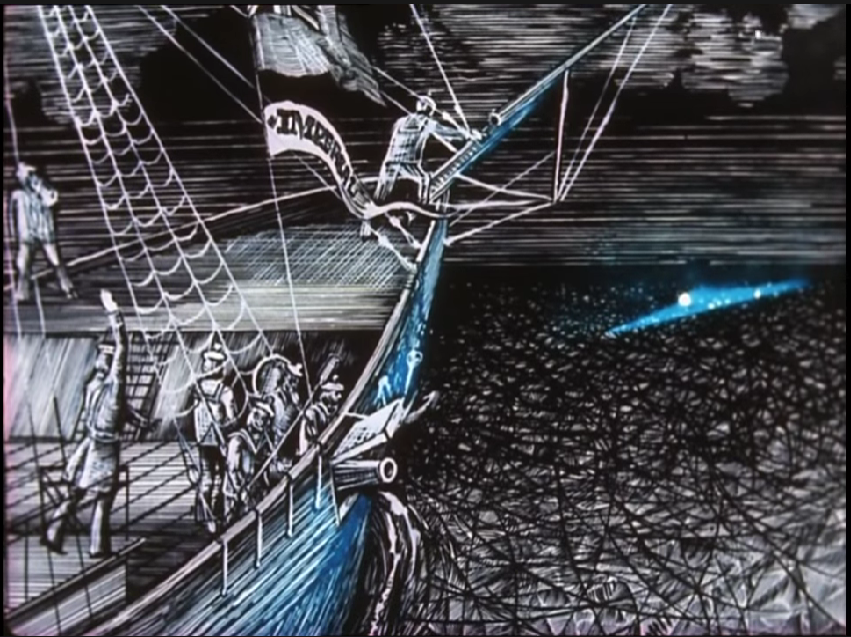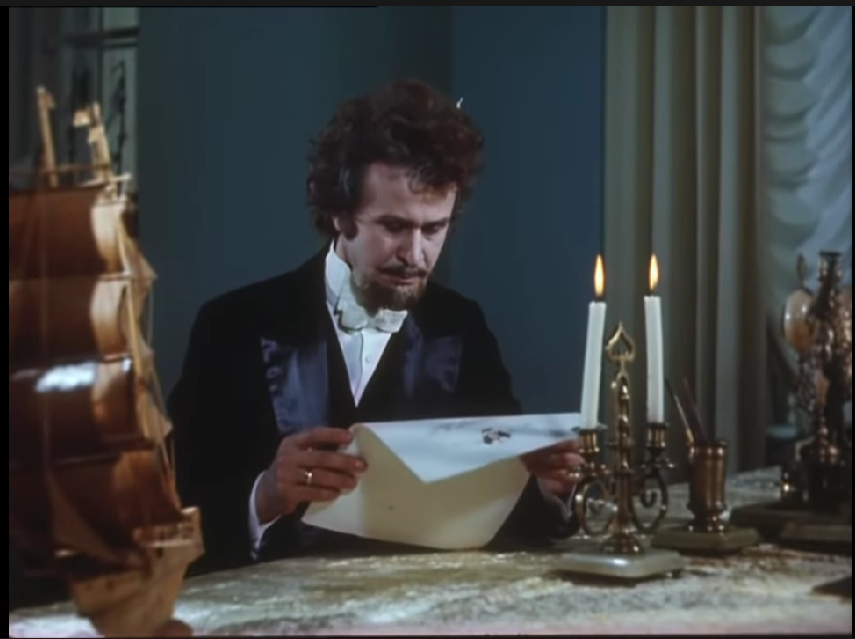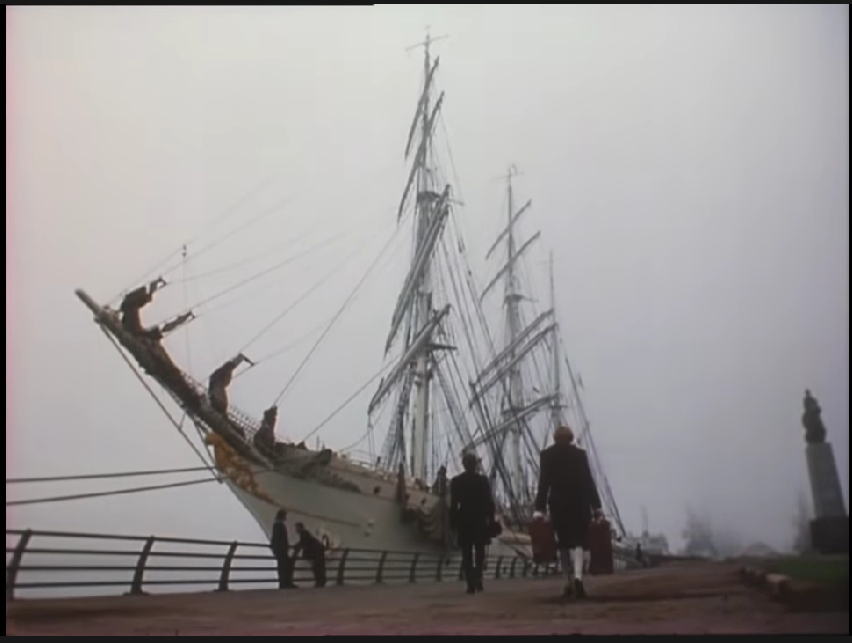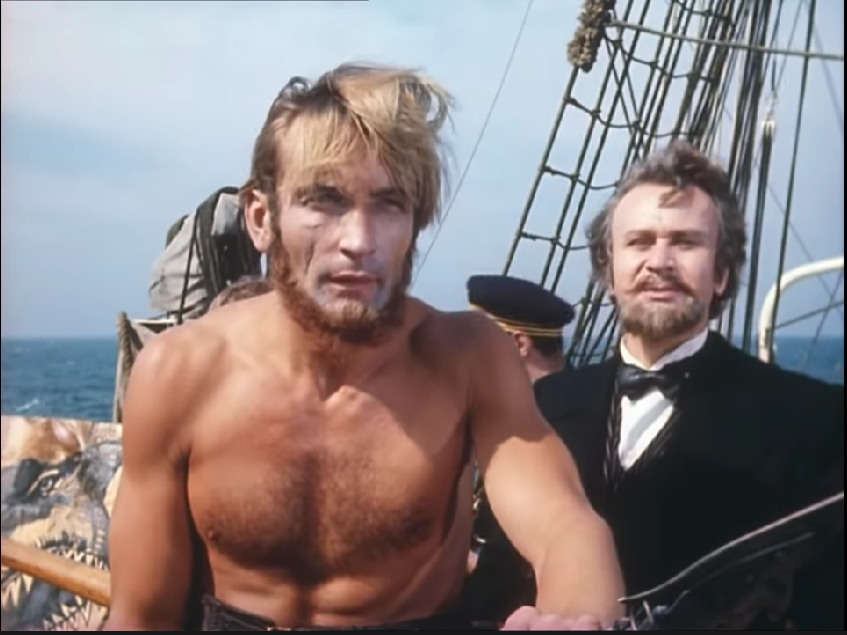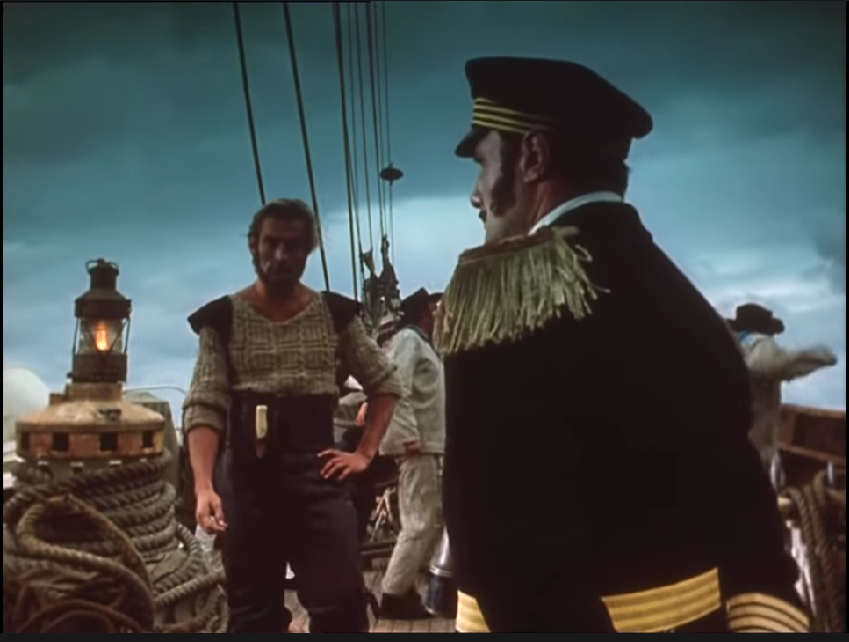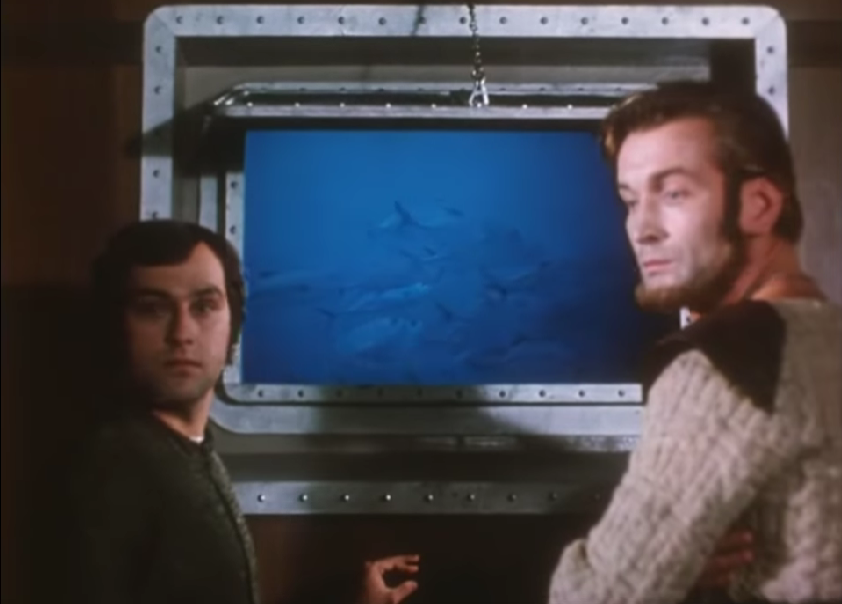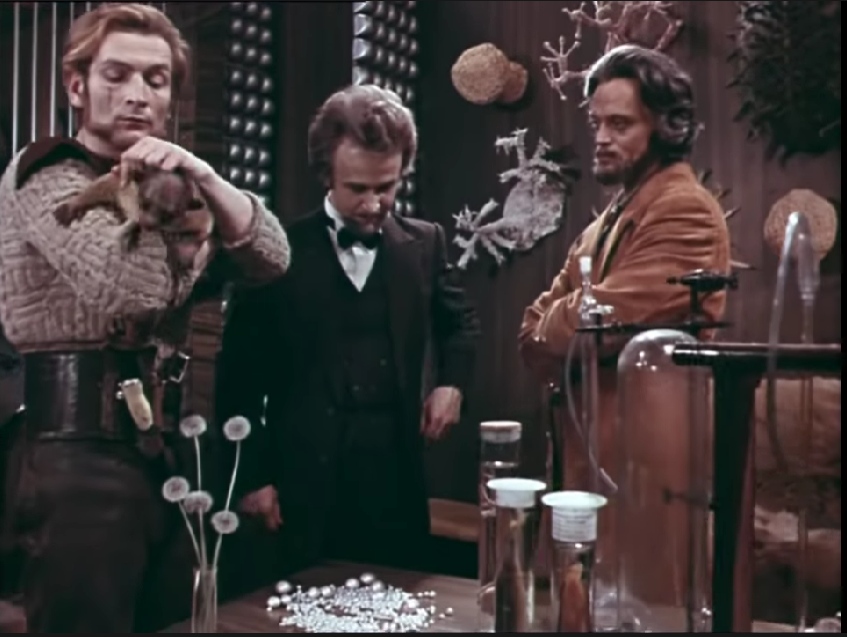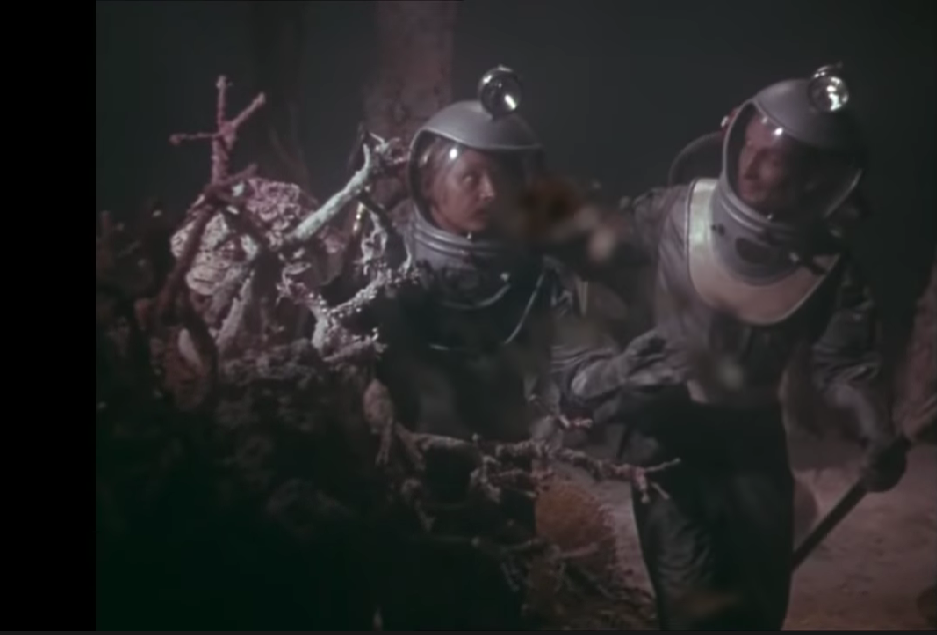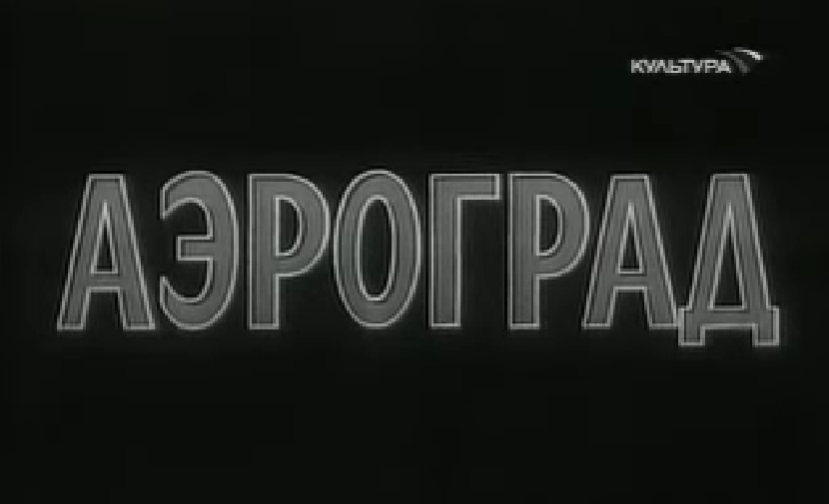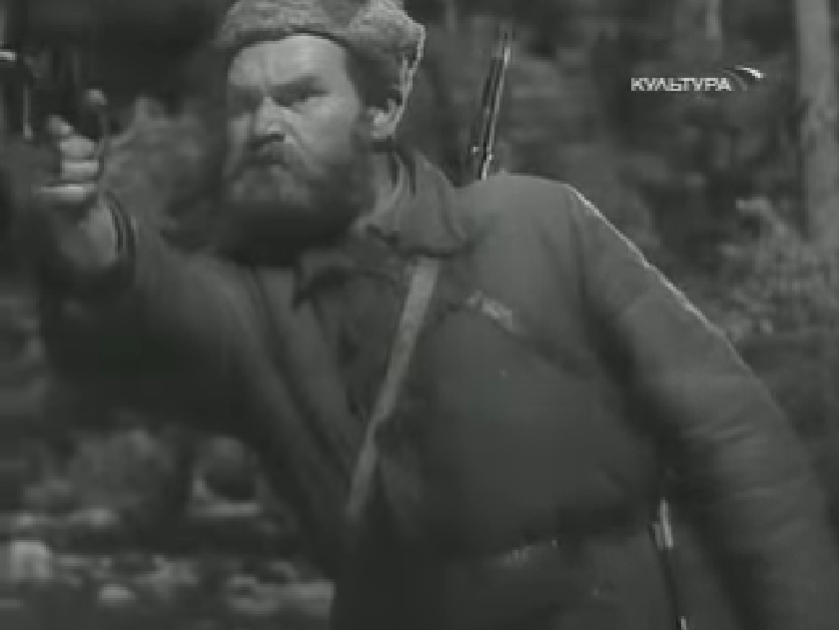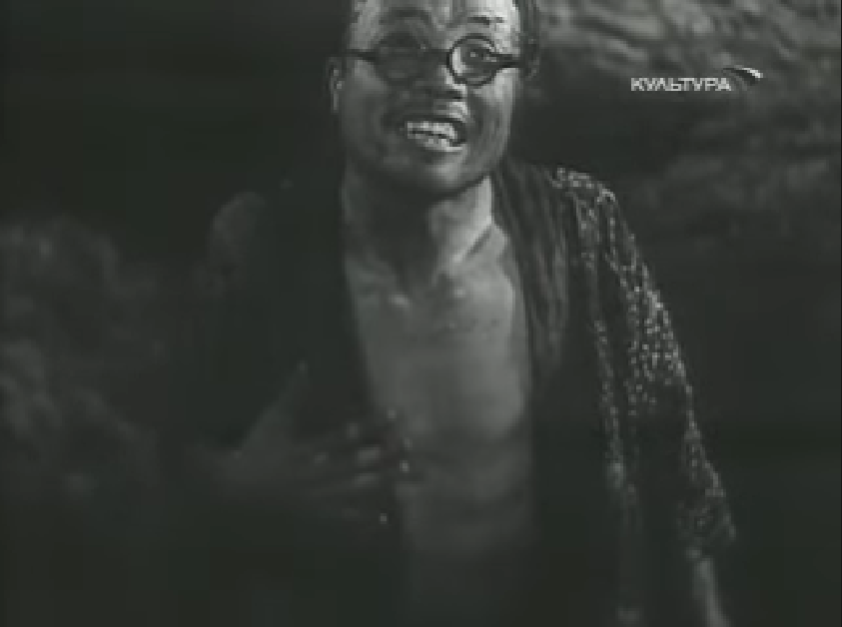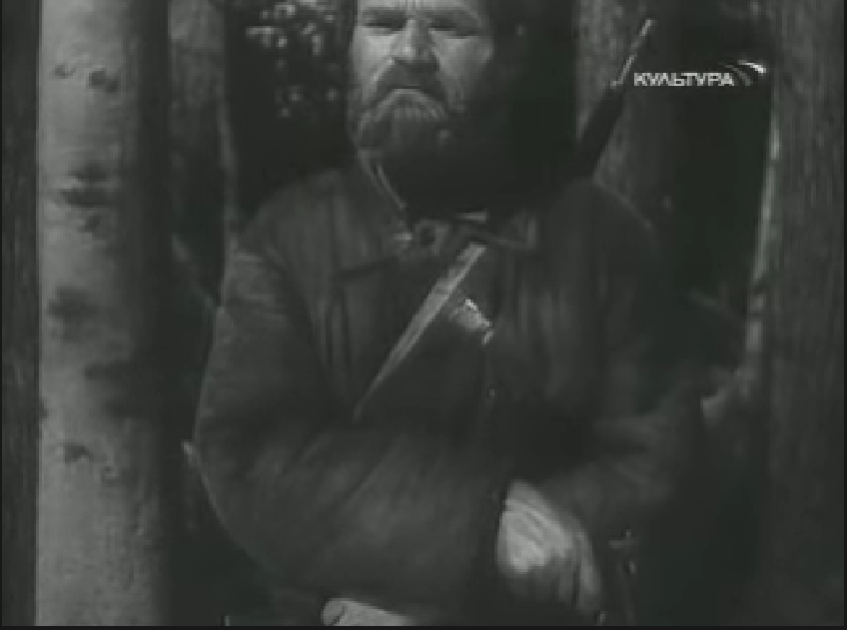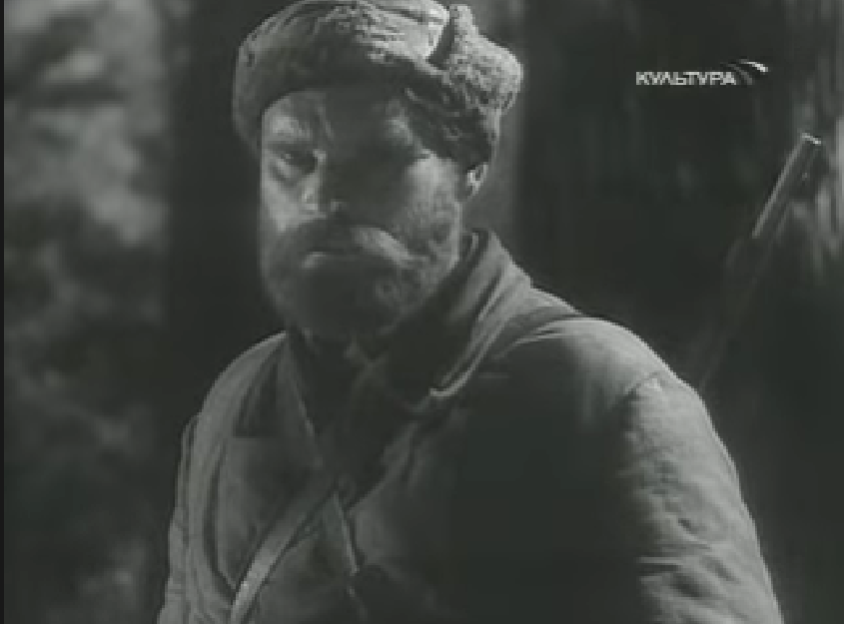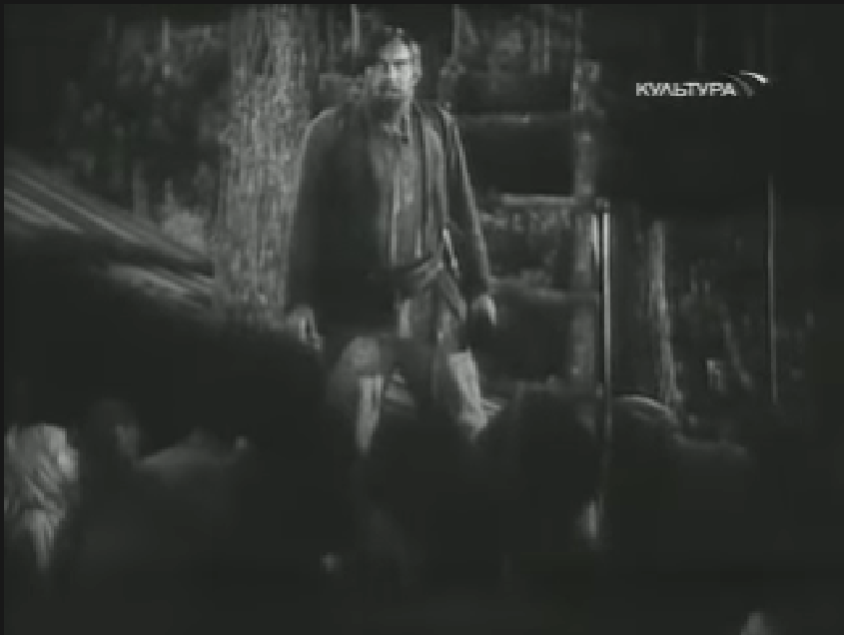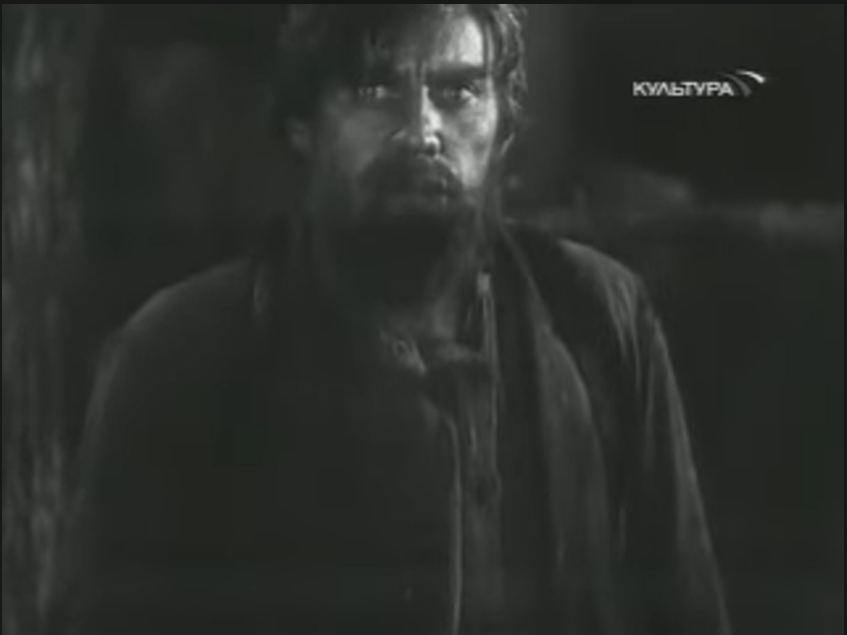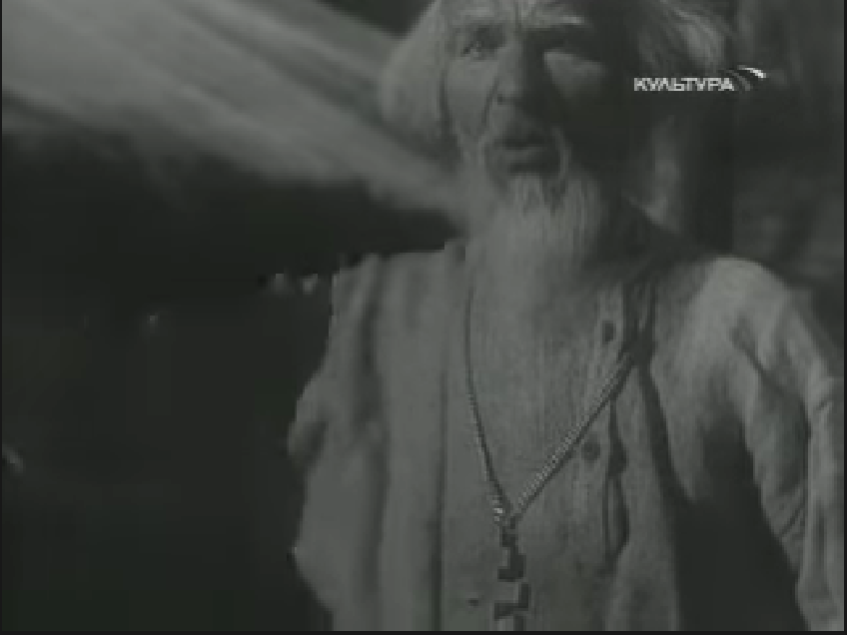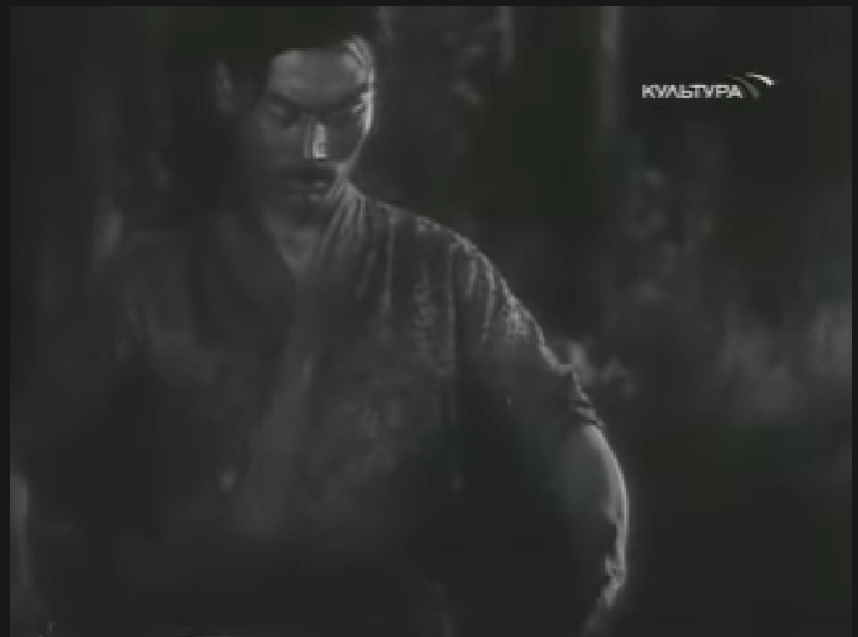-
#504 – Space Trucker Bruce (2014)





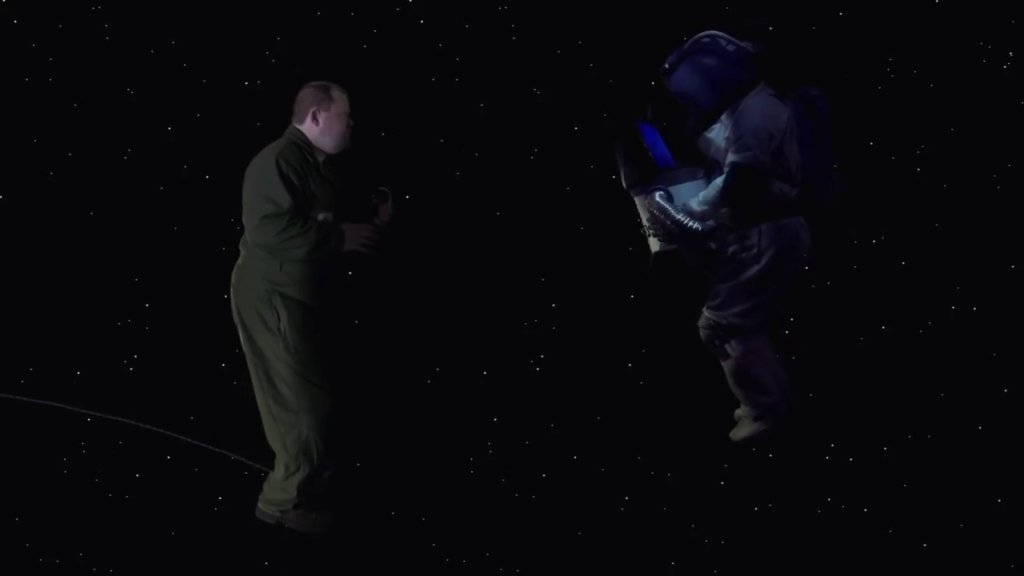



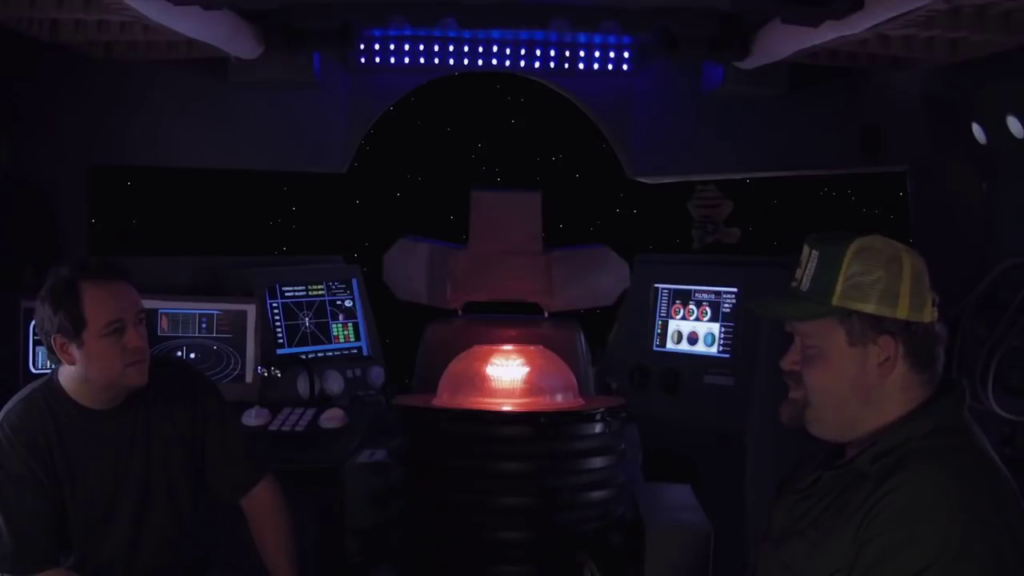
Space Trucker Bruce (2014)
Film review #504
Director: Anton Doiron
SYNOPSIS: Bruce is a trucker who is hauling hog fat from earth to Titan Station near Saturn. Along the way, he picks up a hitchhiker named max, who is introduced to the trucker lifestyle.
THOUGHTS/ANALYSIS: Space Trucker Bruce is a 2014 science-fiction film. Set in the future where humans have colonised the solar system, we see a trucker (presumably Bruce) hauling twenty thousand tons of hog fat to Titan station in his spaceship (space…truck?). Interestingly, this is also the same opening premise of the 1996 film Space Truckers, although there is no formal connection between the two. Along the way, he picks up a “hitchhiker” named Max, whose ship is stranded. Both being a long way from civilisation, the two learn to live together as Bruce continues on his trucking journey. Along the way, the plot focuses on revealing the philosophy of the trucker lifestyle as Bruce imparts his wisdom to Max about life on the road (in space). The themes in science-fiction films are often used as an analogy for issues and settings that confront us in the present, and unsurprisingly, Space Truckers is an analogy for life on the road as a trucker, hauling goods across the land as a long and often solitary job. The analogy is about as thin as the cardboard used to make the sets, but that’s not really an issue: the focus is on revealing the story and characters with a more comedic tone, and for the most part, it accomplishes that task in a way that is not laugh-out-loud funny, but quiet mix of absurd scenarios and deadpan delivery. Despite truckers having a direction with regards to where they would be delivering to always guiding them, this film gives an insight into the in-between; the lonely drive without any contact from the beginning and end, and that’s quite an interesting juxtaposition.
A small cast of characters make up the film, with most of the runtime being dedicated to Bruce and Max (who serves as the viewer’s substitute) alone in space bonding in the loneliness of space. There’s some question regarding Bruce’s sanity after being in space for so long, but his philosophy about the trucker lifestyle and “living in the moment” makes him appear zen-like and at peace. Then again, one of the characters is a tub of sour cream that may or may not be a voice in Bruce’s (and Max’s) head, so it really is open to interpretation. A few more characters turn up later on when Bruce and Max make it closer to civilisation, but they don’t change the dynamic too much. It is interesting to see after we learn about the trucker lifestyle, how it then applies to dealing with people after reflecting on it so long in the loneliness of space, and again there’s these little changes and developments which keep the film from stagnant and aimless.
One very important thing about this film is that it is a zero-budget creation, made by essentially one man in his backyard. Nearly all of the sets are made from cardboard, and once you realise it, you can never unsee it. However, it did take me quite a while to recognise this, and that is definitely a credit to how well done these sets are made. Even though the film is restricted to two or three sets for the majority of the film, it just about pulls it off, seeing as everything is set aboard the same small ship anyway. The acting is a bit flat, but it helps get the message of the film across in a low-key way. Overall, Space Trucker Bruce is a good effort at making a film with very little budget to back it up: there’s a mixture of comedy and character study that reveals the trucker lifestyle. It may not be for everyone as it lacks some direction, and some people may not be able to overlook the flat delivery of lines and the cardboard sets, but there is a certain magic in this barebones, almost one-man production that’s equal parts comedic, absurd and self-aware to be entertaining.
-
#503 – The Mystery of the Third Planet (1981)
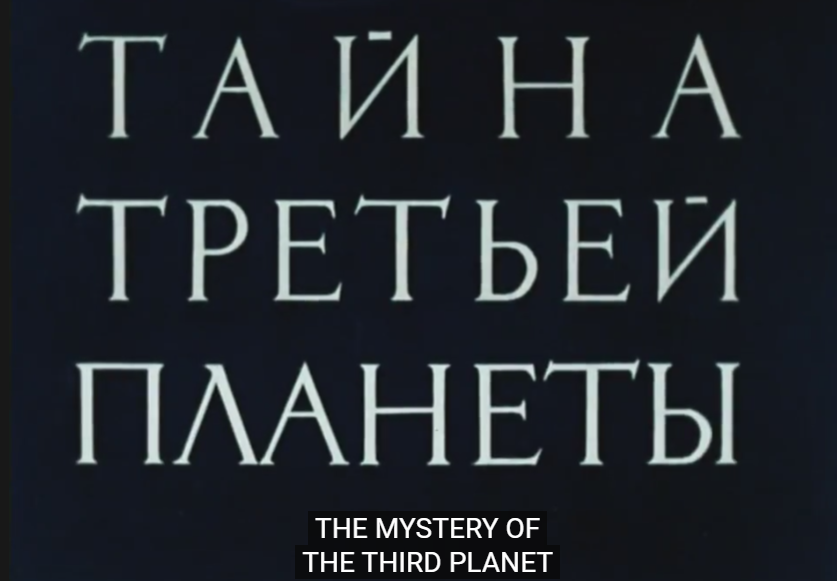
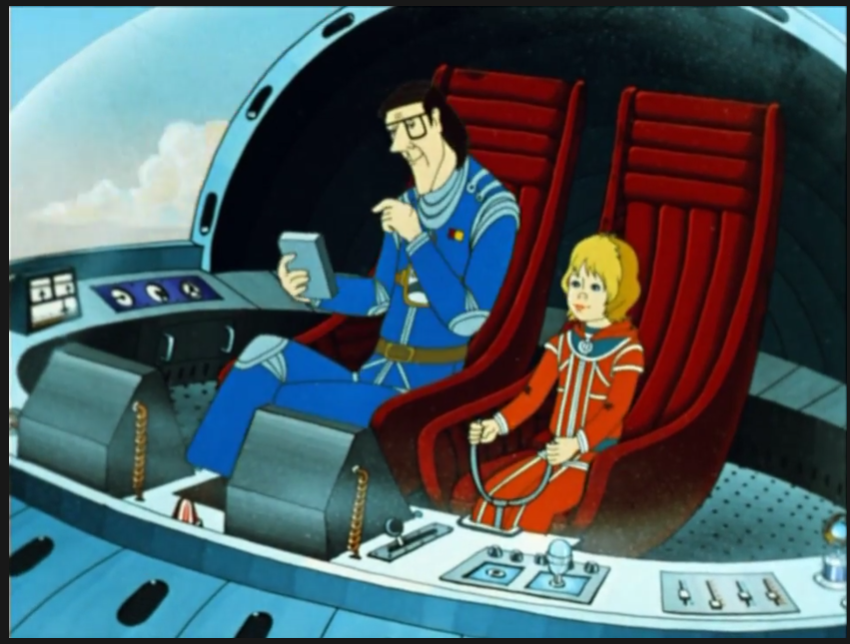

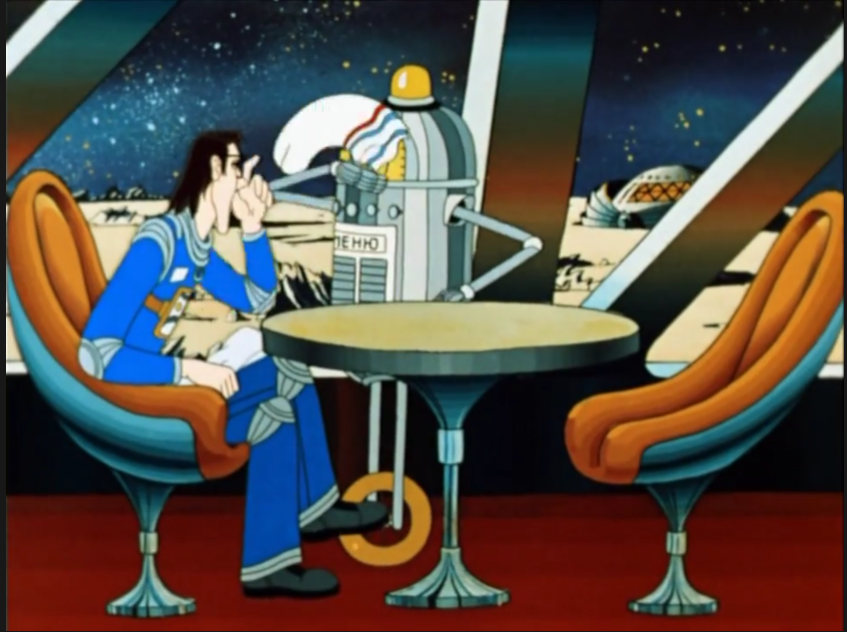
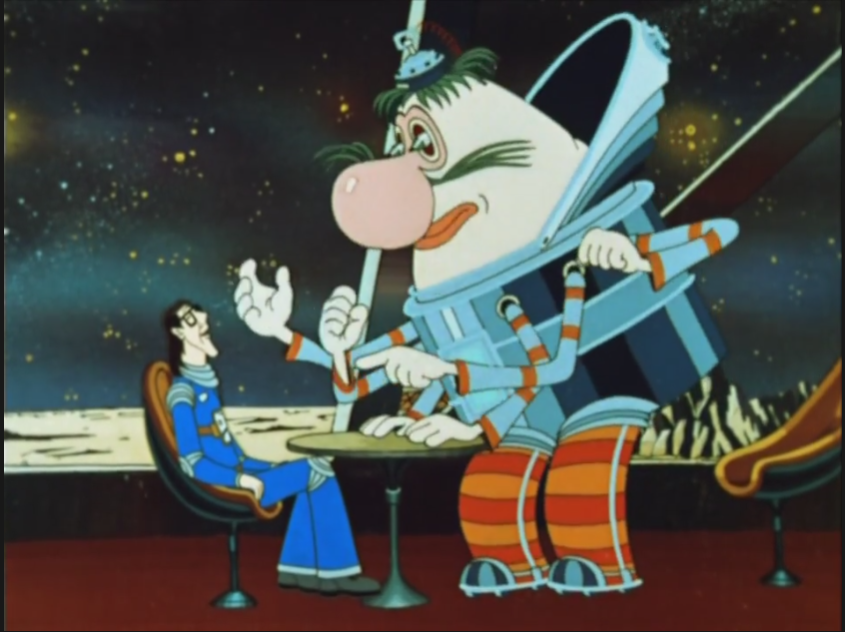
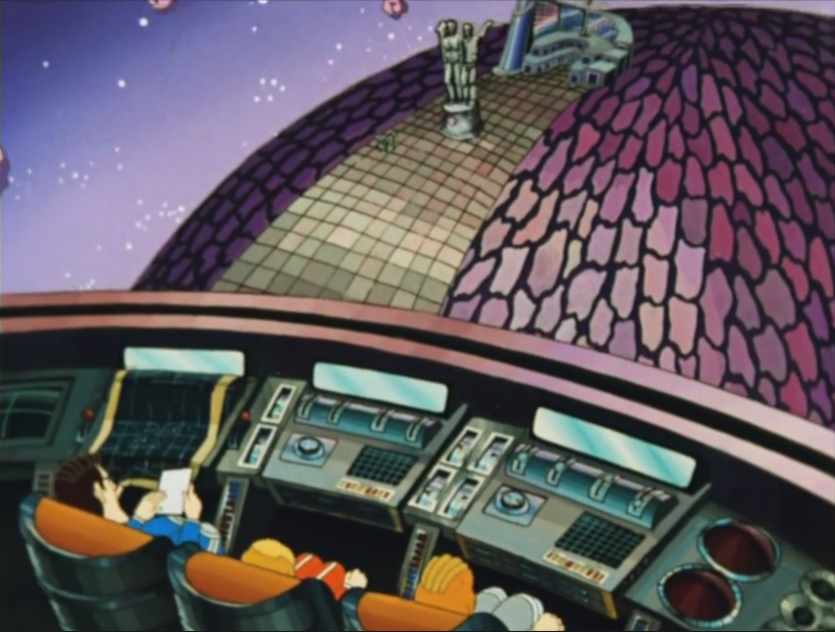
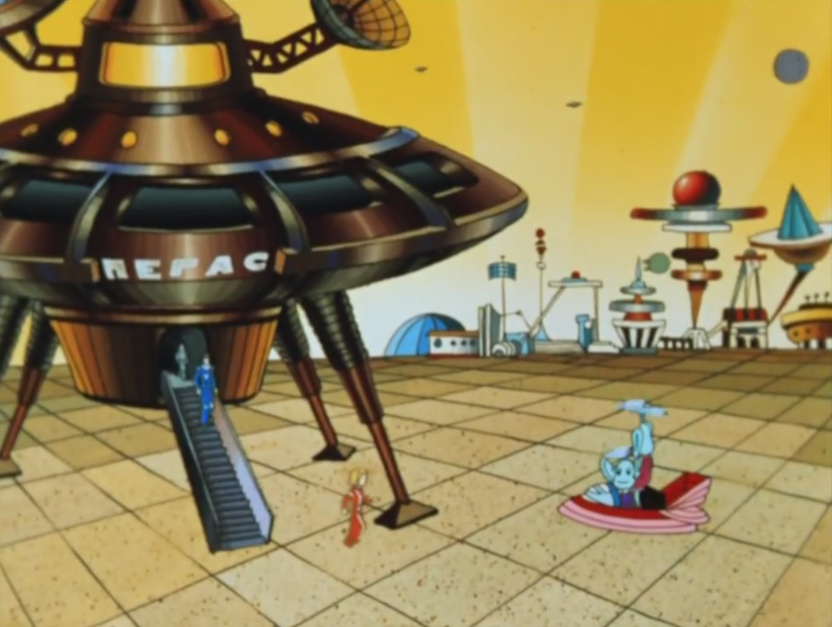
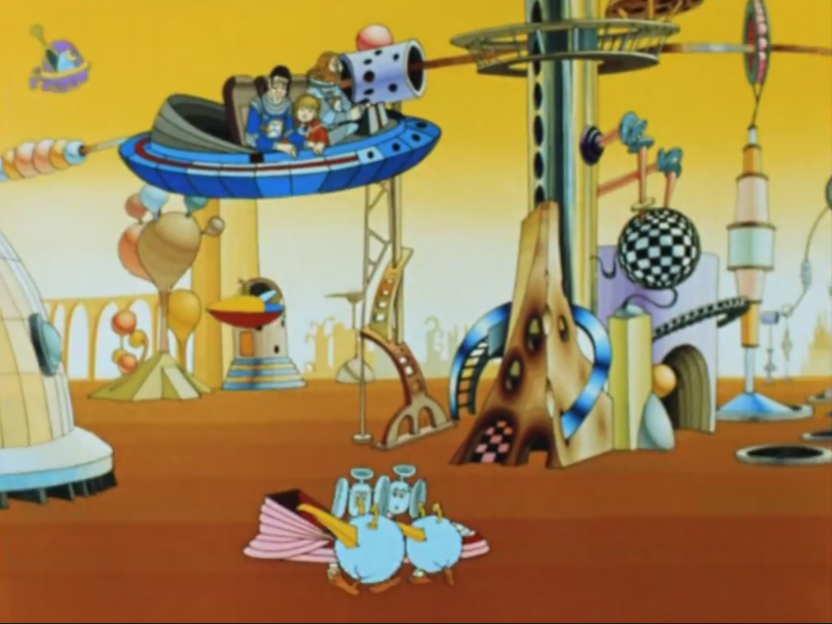
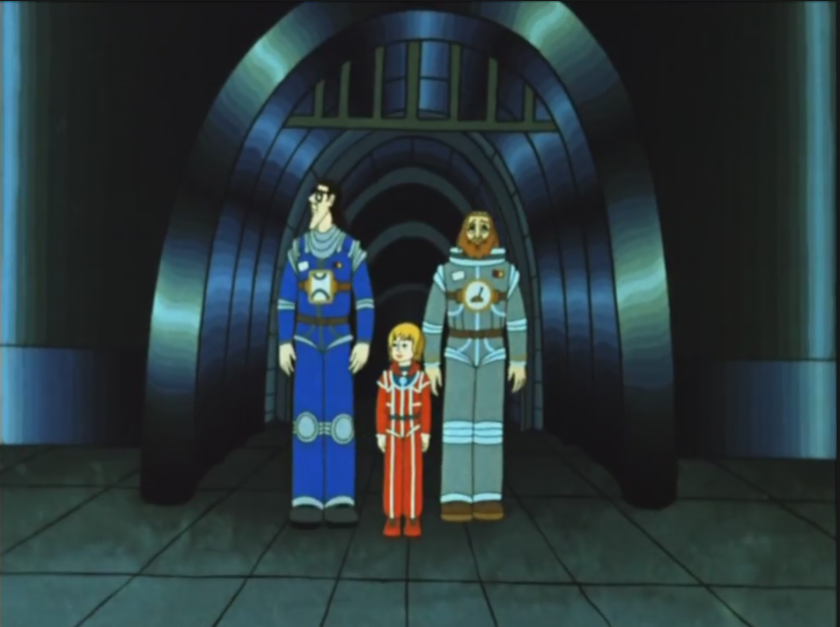
The Mystery of the Third Planet (1981)
Film review #503
Director: Roman Kachanov
SYNOPSIS: Captain Seleznyov and his daughter Alice are travelling in their spaceship to other planets to find animals for their zoo. Seleznyov runs into his old friend Gromozeka, who directs them to the Planet of Two Captains, and a museum dedicated to Captains Kim and Buran, who travelled across the universe in their own spaceship. However, they soon become embroiled in a mystery surrounding the museum’s director, and encounter danger as they try and get to the truth…
THOUGHTS/ANALYSIS: The Mystery of the Third Planet is a 1981 animated film. The film is set in the 22nd century, where we see professor Seleznyov and his daughter Alice looking for rare animals for their zoo in Moscow. On the moon, they run into Seleznyov’s friend Gromozeka, who suggests they head to the “Planet of the two Captains,” where a museum dedicated to Captain’s Kim and Buran, who travelled the universe in their spaceship, is located, and may have information about any rare or exotic animals. The story of the film embroils Alice and her Father in a mystery surrounding the fate of the Captain’s and the museum’s director Verkhovtsev. The film has a fairly short runtime at just under fifty minutes, but it fits a lot into a plot that feels complete and full of development and direction, and a mystery to unravel. It is a film primarily aimed at children, so it has to be interesting enough to keep their attention, and it certainly has plenty going on to do that. The world that it creates in the 22nd century is full of futuristic technology, high contrast colours, and weird aliens that sets up a range of interesting scenarios, but the constant moving around from planet to planet can be a bit confusing. When you’re a kid though, you’re not overly concerned about the intricacies of the plot, but rather the energy and excitement that it provides, and there’s some high stakes and danger that does that, so overall it leaves a positive impression.
The film is based on a series of books centred around the main character Alice Selznyov, which were popular in the Soviet Union with children. Alice provides a relatable character for young viewers, and is full of energy and life to fit that role. One of the highlights of the film is the alien designs: being an animated film, it has the creative scope to go wild with the alien designs, which it certainly does. Gromozeka, with his six arms and disturbing pointy eyes is the one that stands out, and is also in keeping with his appearance as described in the books. The live-action adaptations, such as the miniseries Guest from the Future and the 1987 film Lilac Ball didn’t have the budget to bring these creative designs to life, and opted for more humanoid appearances for the aliens, which is a shame. Even the human characters are distinct enough in appearance and design so that they are instantly recognisable, and despite being all different heights and sizes, they still interact seamlessly.
This film was very popular upon it’s release in 1981, and seems to have remained a favourite memory of people who grew up in that era. So much so that the 2009 film Alice’s Birthday, based on another of Alice’s adventures, has a similar art style and direction that I think tries to ride on the nostalgia of this film. It wasn’t just in the Soviet Union either: it was translated and released in the U.S. (twice) and lots of European countries too. Perhaps the runtime makes it fit neatly into a one hour TV slot (including adverts), so that might be a reason. The English dub is very much of the time and is a bit poorly produced, so if you’re going to watch this film, definitely go for the original version with subtitles. Nostalgia certainly plays a part in how fondly this film is remembered, but that’s not it entirely. It definitely does have plenty of good points independent of said nostalgia: it’s packed and energetic plot, it’s creative character designs, and it’s colourful, abstract scenery are fun and will keep the target audience entertained for its runtime. It holds up as a good film in terms of its structure, style, and design, but I’m not sure there’s enough of a spectacle compared to more modern films for younger generations to have that same feeling.
-
#502 – Alice’s Birthday (2009)


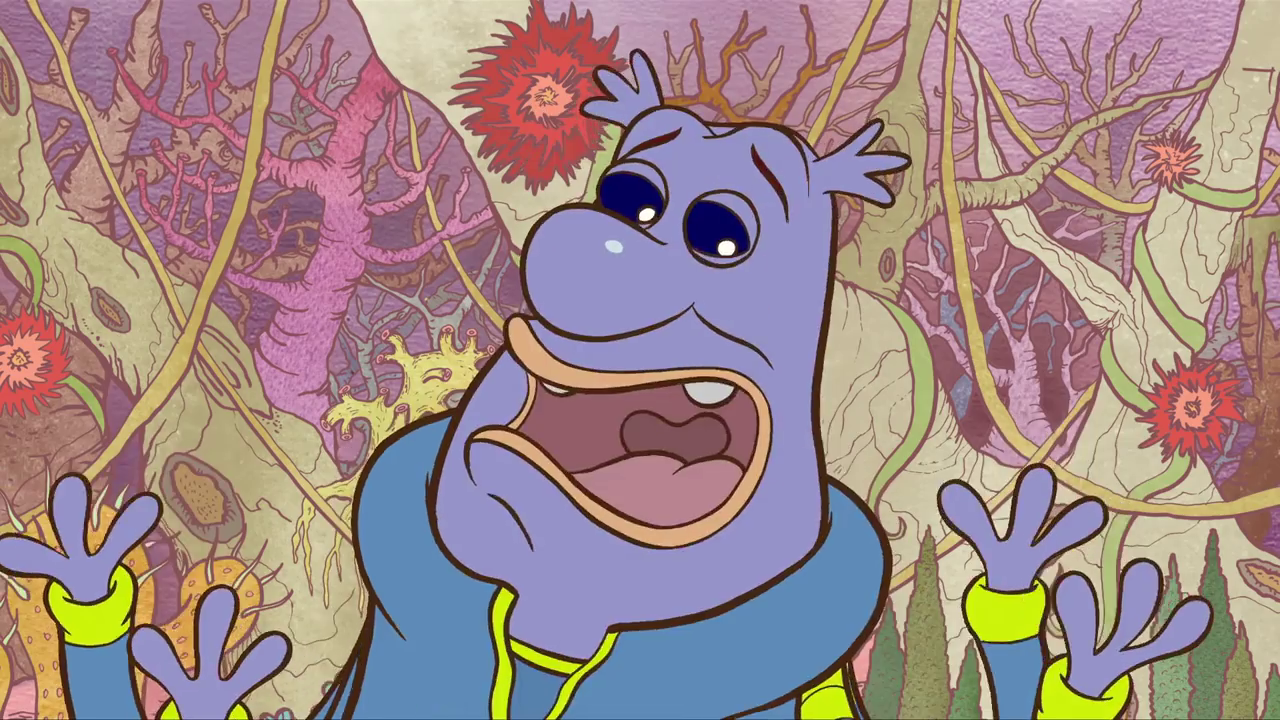

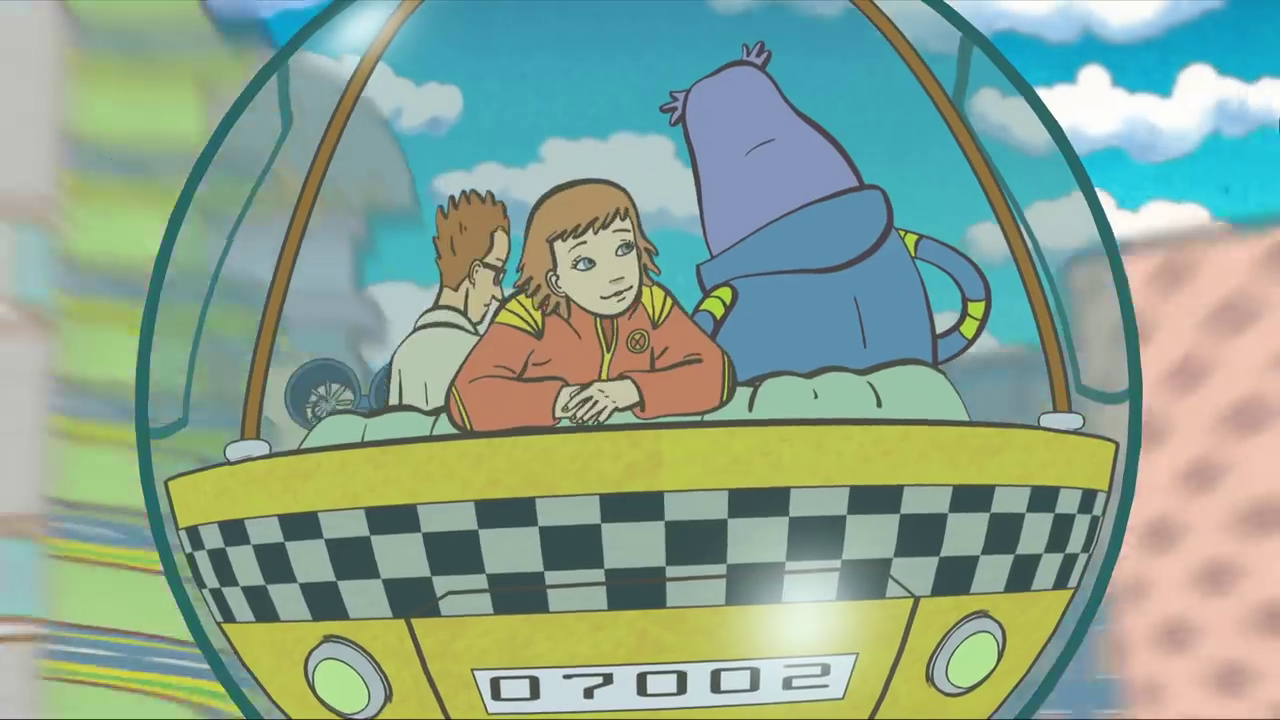
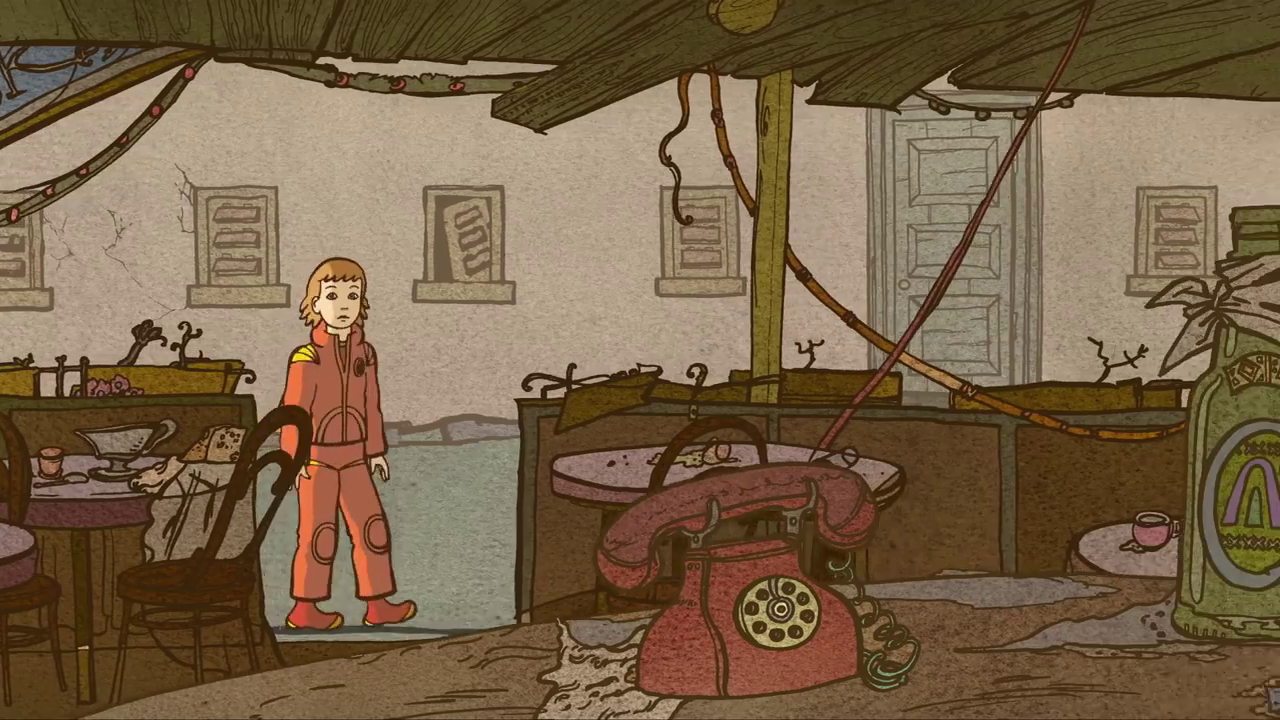

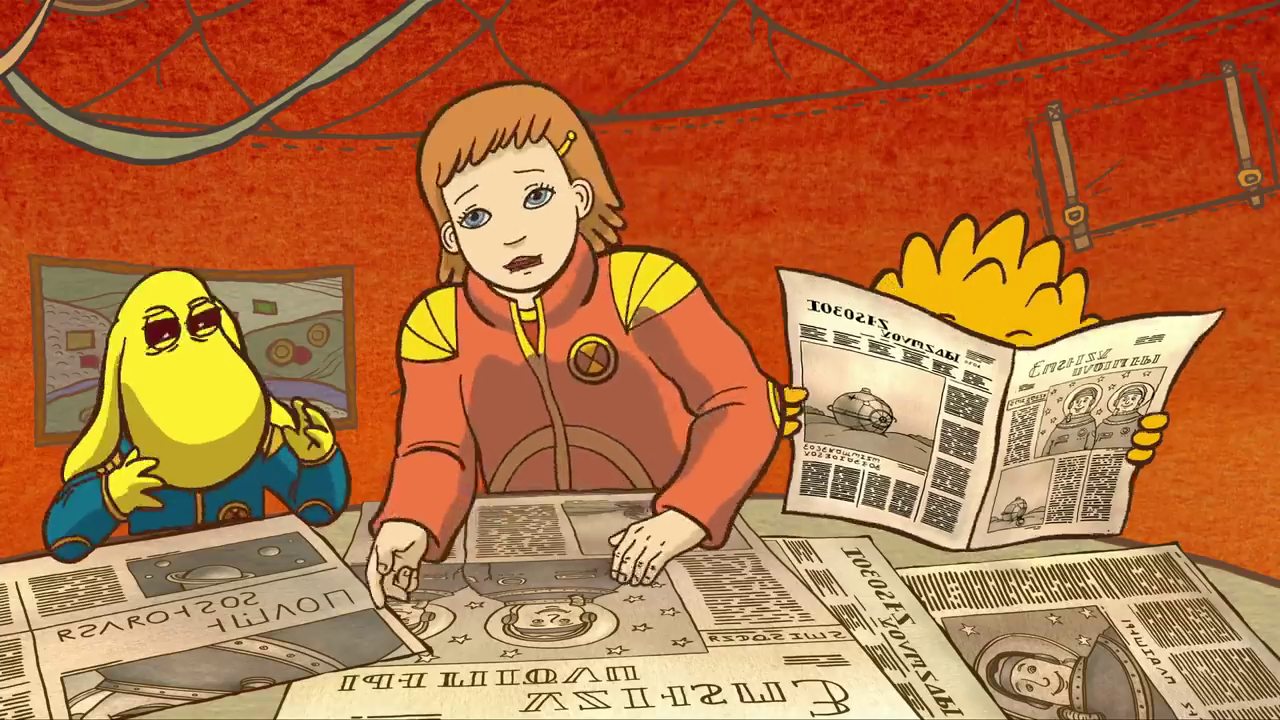
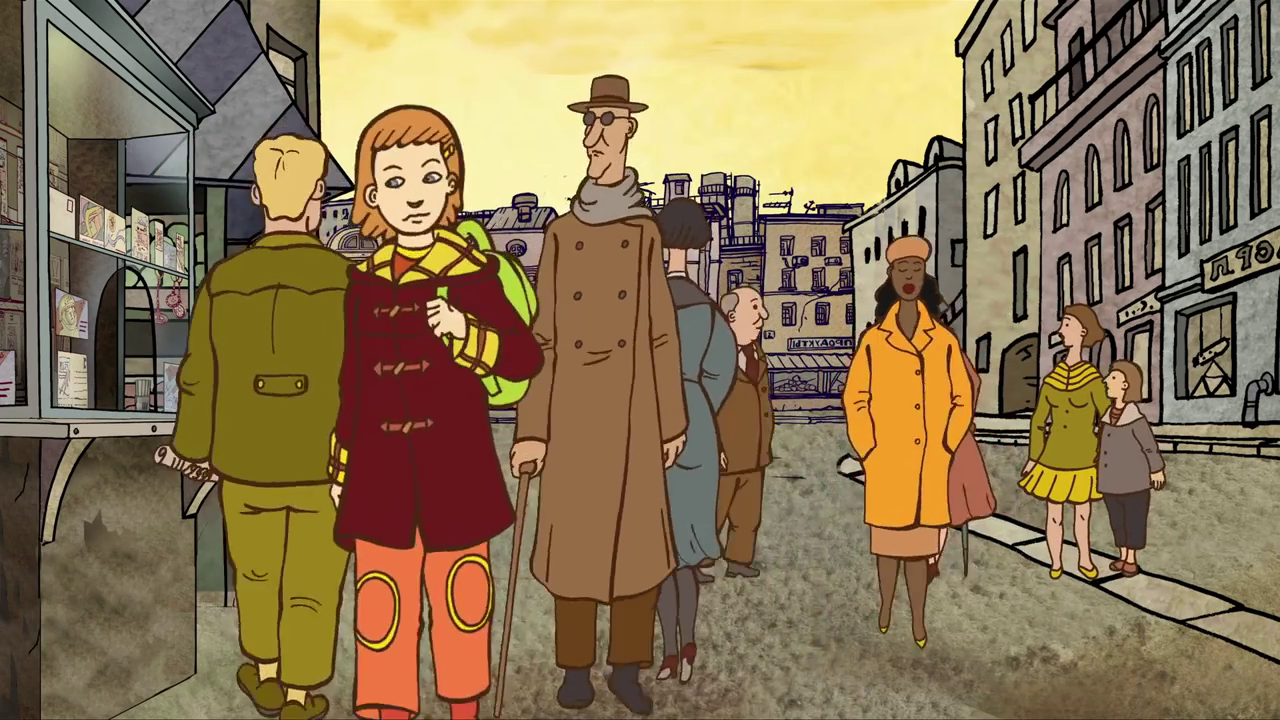
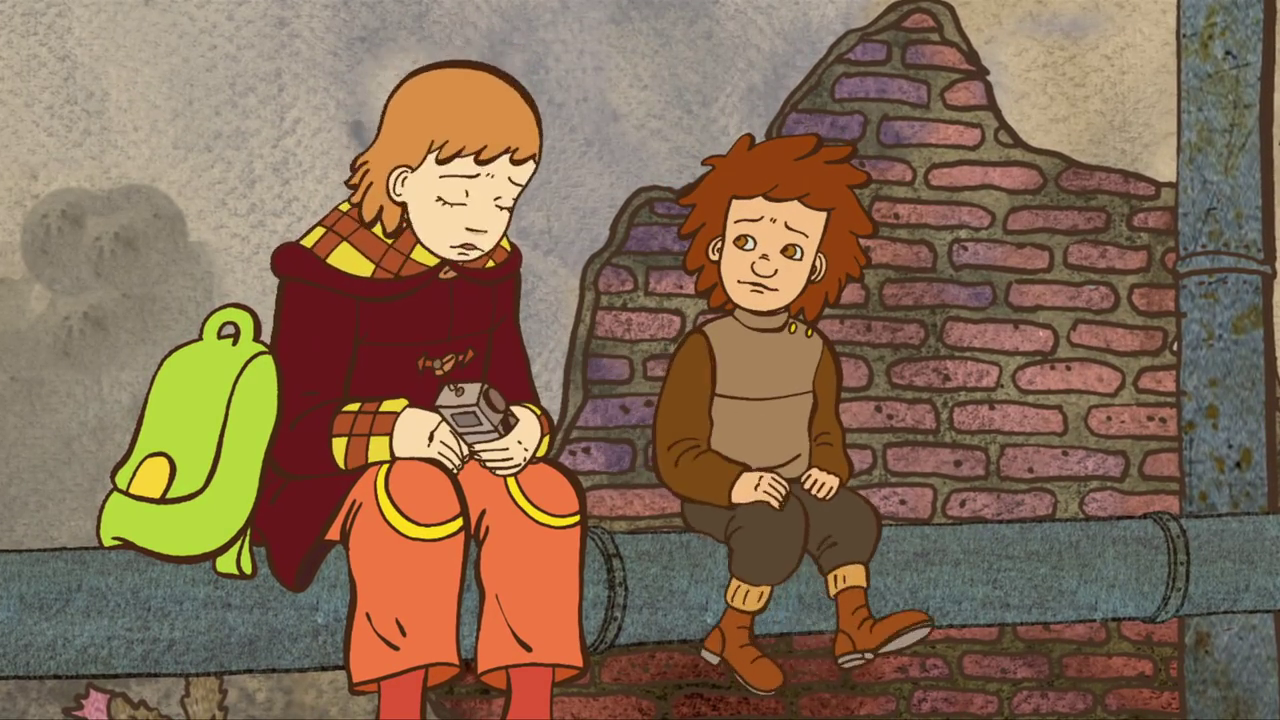
Alice’s Birthday (2009)
Film review #502
Director: Sergey Seryogin
SYNOPSIS: Alice Selezneva has just failed a history exam at school, but things are looking up, as a friend of her Father’s Gromozeka, has arranged a trip for her birthday to the planet of Koleida with a research expedition. The planet once had a flourishing civilisation, but a space virus wiped it out centuries ago. Alice decides to use the expedition’s time travel machine to go back in time (along with Professor Rrr, another member of the expedition) to save the planet’s population, not knowing the virus is still alive in the present and approaching the camp of the expedition…
THOUGHTS/ANALYSIS: Alice’s Birthday is a 2009 animated sci-fi film, which is a re-imagining of the popular 1987 film Lilac Ball and the original novel. The film starts out introducing Alice, an energetic and mischievous girl who fails a history exam after causing chaos in the classroom. She meets up with her Father’s friend Gromozeka, who has a surprise for her upcoming birthday: to join a research expedition to the planet Koleida, where a flourishing civilisation was wiped out by a space virus centuries ago. The film, as mentioned is a re-imagining of the film Lilac Ball and it’s original novel, part of a series of adventures starring the character of Alice. The series was quite popular in the Soviet Union, and so this film is riding a little on that nostalgia bandwagon. However, it certainly stands as a film in it’s own right too, as the story deviates from the original film a fair amount, and being an animated film, has a lot more freedom to bring the futuristic world to life. The story itself flows pretty well, being split into a fairly typical three-act structure that has a good amount of variety, humour, action, and even some scary dark moments. The essentials of the story are things that you have probably seen before involving time travel and trying to change to change the course of the future in time, but it is still entertaining enough to watch.
Alice is a very typical lead for these types of films: adventurous, mischievous, and a typical kid which it’s young audience can identify with. Her character has a wide range of emotions and relationships with other characters, so she feels like a well-rounded individual with enough spirit and energy to be her own person. One notable difference in the rest of the characters form Lilac Ball is that the animated medium gives a lot more freedom to give the aliens a more alien design; in Lilac Ball, the characters which were aliens in the novels were re-imagined as mostly human; in the animated Alice’s Birthday, the aliens aboard the research expedition are all shapes and sizes, and though we don’t hear from many of them, their unique appearances make the film colourful and interesting. There is some weird comments near the beginning of the film, which seem to suggest there’s some discrimination against aliens on Earth, but it’s not really brought up again or addressed, so that’s a bit odd. The minor characters, like Professor Rrr and Gromozeka have a very specific role, and you know what to expect when they’re on screen, which is comforting. On a more novel note, the commander of the expedition is voiced by Natalya Murashkevich, who played Alice in Lilac Ball and the 1984 mini series Guest from the Future, which is a nice nod to those productions, and reinforcing the idea that there is a bit of reliance on nostalgia for this film, even though the target audience is obviously a generation that will not have seen those originals.
The animation is fairly fluid, and the characters and world are colourful and animated enough so that it feels like things never really stand still. This is good in the action scenes, but it becomes a bit more choppy when the characters are moving more slowly. I’m not sure how this compares to other contemporary Russian animation, but it feels like a mix between modern productions, while also having a bit of that Soviet-era aesthetic within it too. Again, maybe that’s part of the nostalgia effect the film is riding on. There’s some musical numbers which are a bit generic, but again, perfectly serviceable for a children’s film. Overall, Alice’s Birthday creates a colourful and energetic world for it’s titular character to be her adventurous self: the designs of the aliens and the futuristic setting are fun, varied and interesting. The story is a little formulaic being a very typical time travel scenario, but it is still made entertaining by having interesting, individual characters, and expressing a variety of emotions throughout the different scenes. A decent children’s film, which also banks on some nostalgia for a beloved character for adults too, although they probably won’t find too much appeal in the content of the film.
-
#501 – Lilac Ball (1987)
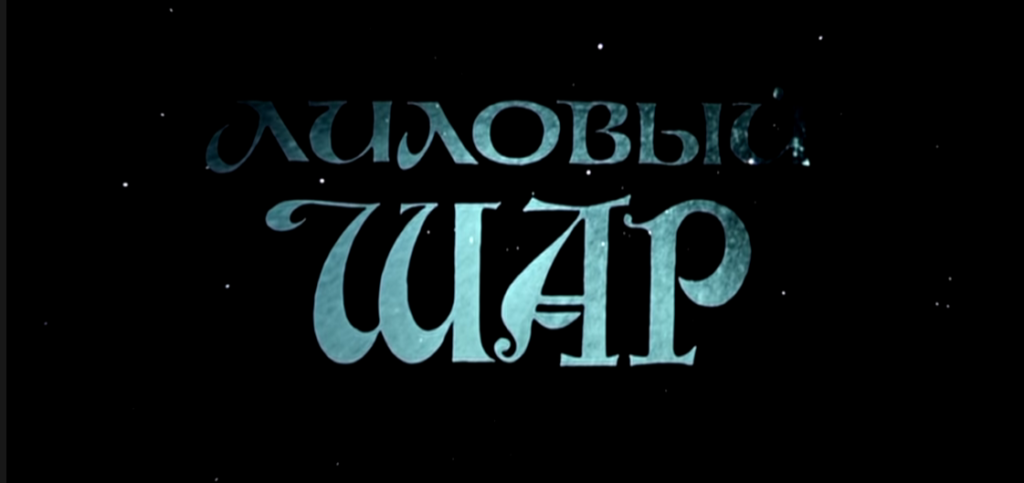
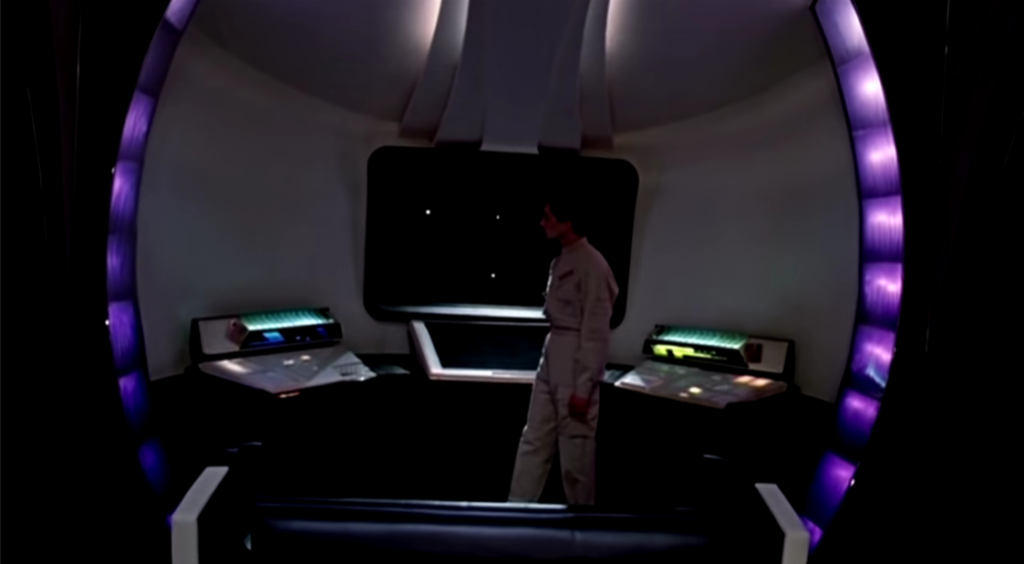
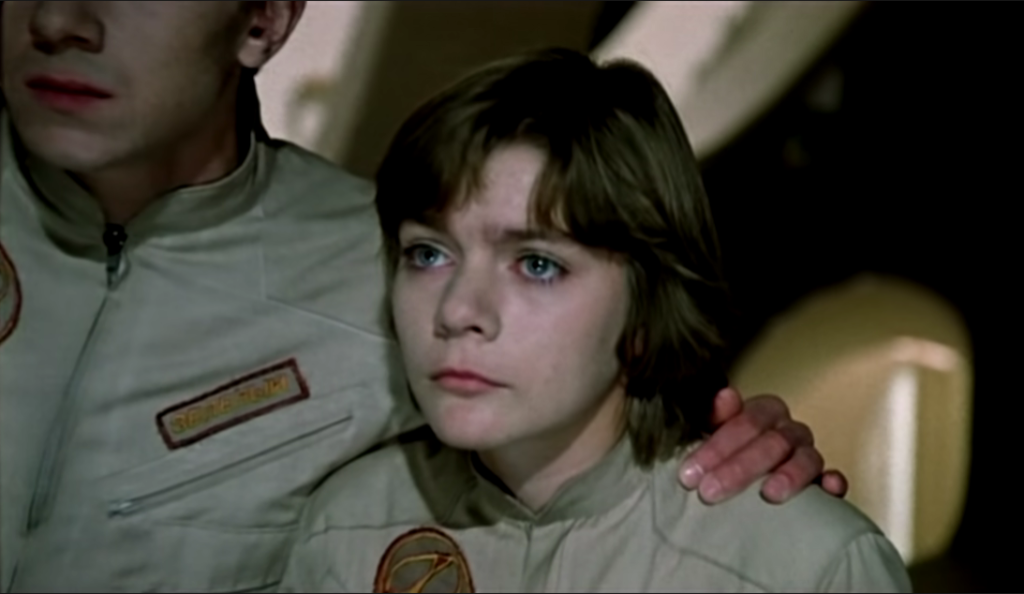
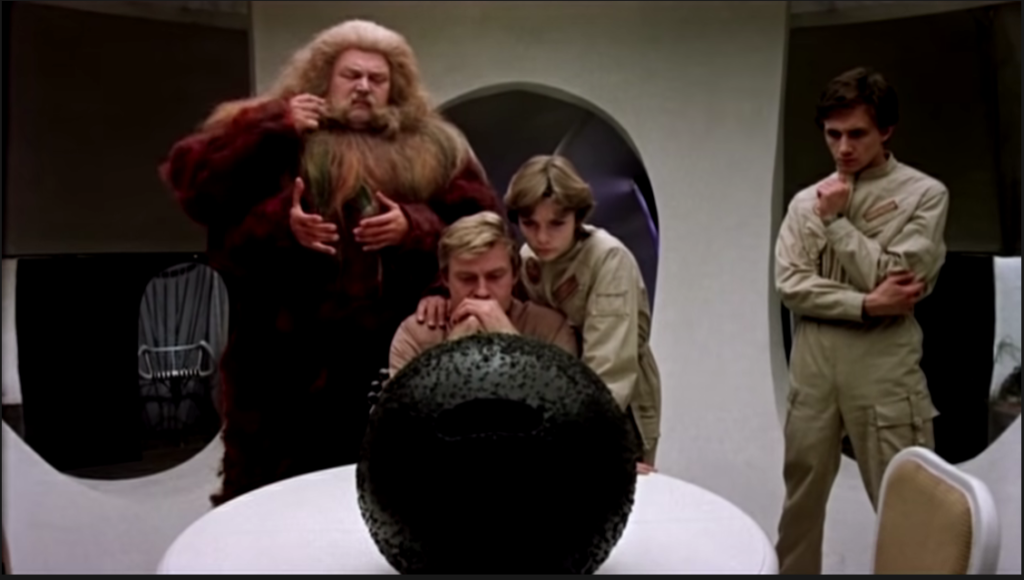
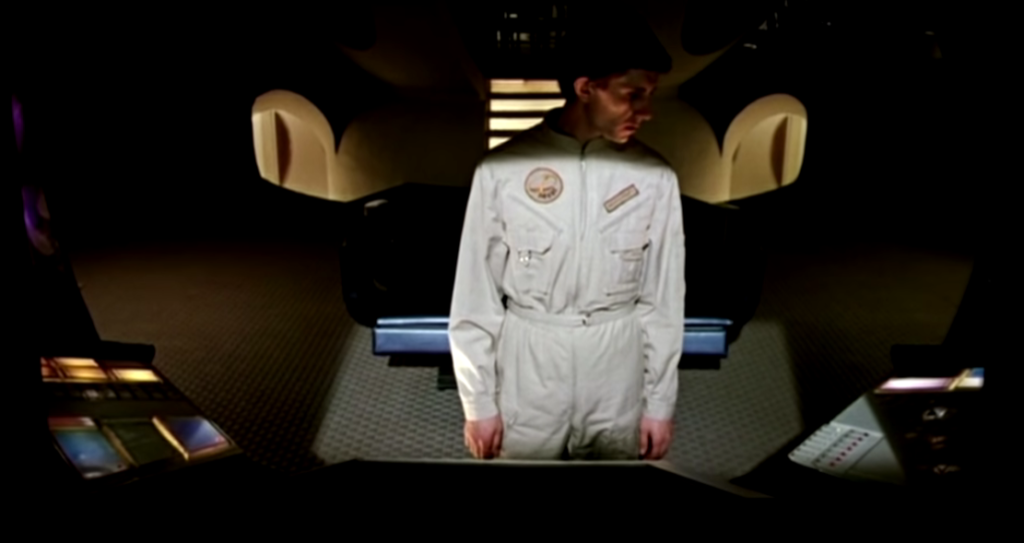
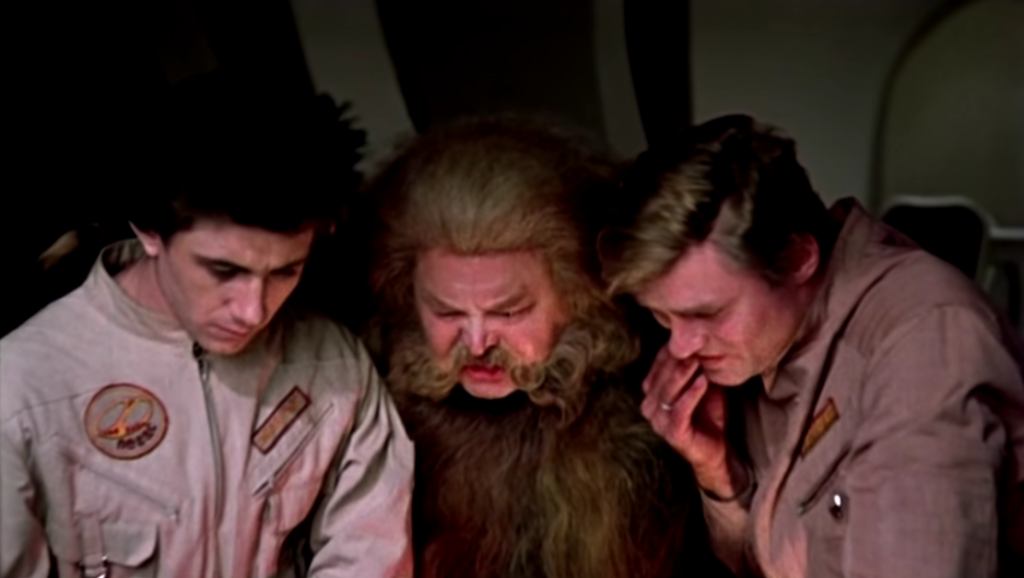
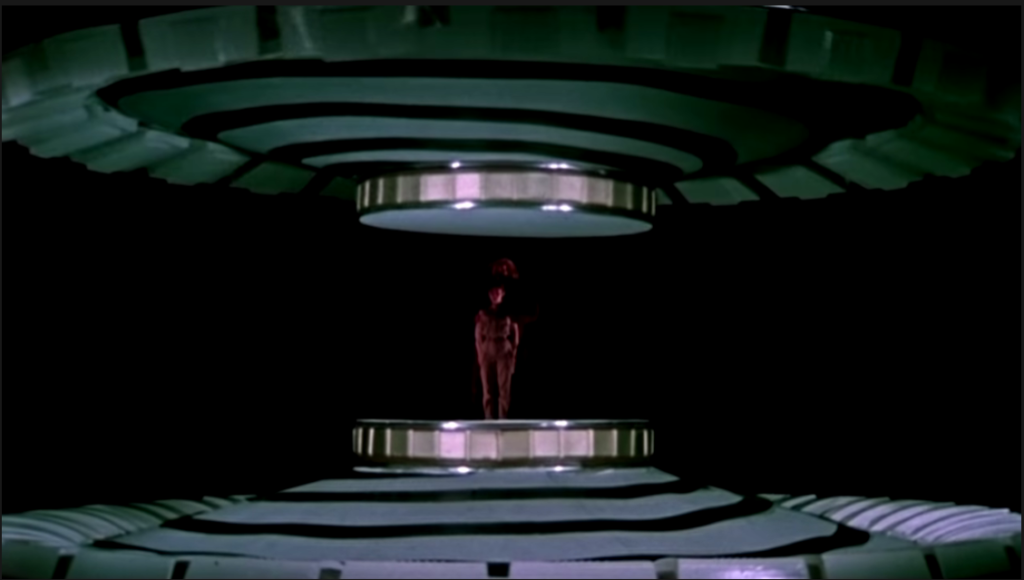

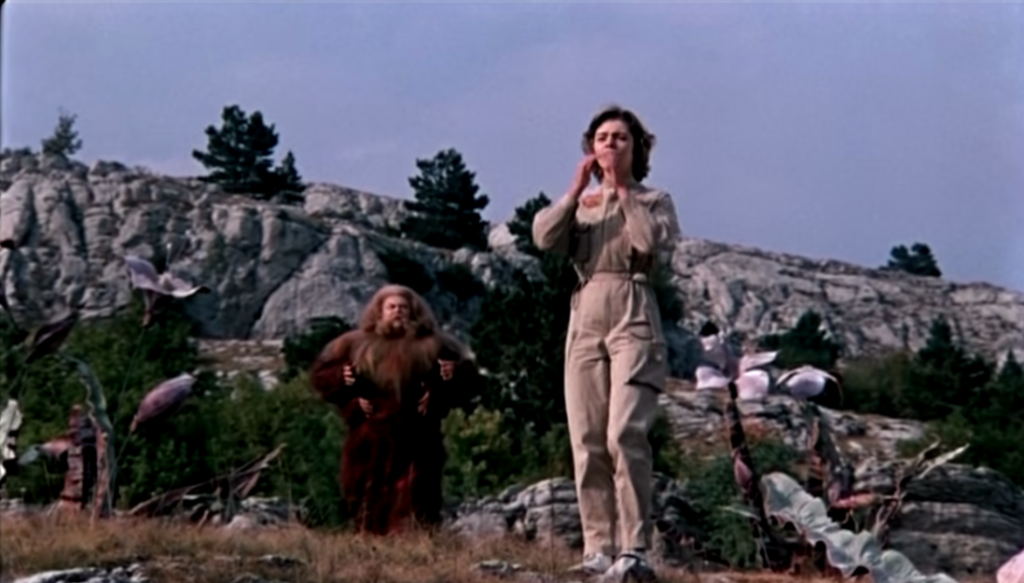
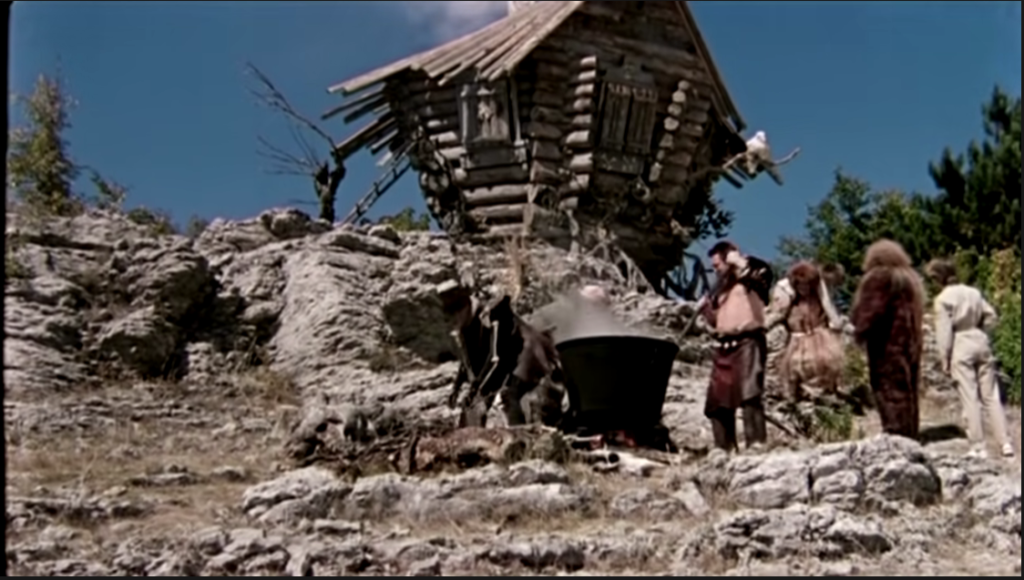
Lilac Ball (1987)
Film review #501
Director: Pavel Arsenov
SYNOPSIS: Travelling aboard their spaceship Pegasus, Professor Selznyova, his daughter Alisa and the rest of the crew encounter Selznyova’s old friend Gromozeka. He explains that he has come from a planet where the population has just been wiped out by a virus that has lain dormant for 26,000 years. The problem is that the same virus was also left on earth, and will activate and wipe out the population in a matter of days unless a cure can be found…
THOUGHTS/ANALYSIS: Lilac Ball is a 1987 children’s sci-fi film based on the novel by Kir Bulychyov. The story starts out aboard the spaceship Pegasus, manned by Professor Selznyova and his crew, including his daughter Alisa. On their travels, they come across the Professor’s friend Gromozeka, who tells them that a 26,000 year old dormant virus has just awakened and wiped out the entire population of a planet…and the same virus is on Earth and will activate in a few days time unless a cure can be found. The only solution is to send Alisa back in time to Earth 26,000 years ago to find the source of the virus. The most notable thing about the film is that it is pretty much an even split between science-fiction and fantasy: almost exactly at the halfway point, the spaceship and future gives way to an ancient Earth filled with fantasy creatures. With a runtime of seventy three minutes, the film certainly packs in a lot of stuff, combining that familiar soviet-era sci-fi aesthetic with some more offbeat fantasy creations. As a film aimed at children, it has to keep up a certain energy level to keep it entertaining, and I think it has plenty of imagination and variety to keep things interesting. The plot is quite packed as mentioned, and is a bit overwhelming to follow. Part of that might be the loose subtitles I watched the film with, and part of it is probably due to the fact that a lot of the original novel was cut to fit it into this fairly short runtime. Intricacies within the plot aren’t too problematic with children’s films though, as long as there’s plenty of jumping off points to spark their imaginations, which I think this film has.
Alisa is the main character of the film, and had appeared in the TV series Guest from the Future in 1984 before this film was made (and portrayed by the same actress). I believe that there is also a series of novels centred around her character, so she’s fairly well established, and it is refreshing to see a good female lead in these types of films. The rest of the characters serve a supporting role, and are a colourful bunch, again split between the more grounded characters in the sci-fi setting, and the fantasy half, where the characters are a bit more outlandish. The earth of 26,000 years ago is probably not very accurate, as there are talking birds, flying monsters, people in wooden houses and other such things which I do not think are historically accurate.
As mentioned, the sci-fi aesthetic feels very familiar if you have watched any other soviet-era sci-fi. The spaceship’s corridors and control panels have that typical look and feel of the time, but have a lot of detail and attention in them that is visually appealing. The spaceship itself is quite a unique design: it is a disc shape with retractable “sails” that resemble paper fans. The scenes with the spaceship flying around evading capture from this giant net…ship…thing is quite well done. I noticed the camera is a bit wobbly as it moved through the sets, which is a bit distracting. Moving into the more fantasy setting, the designs of the creatures reminds me very much of something out of The Neverending Story or Labyrinth, which makes me wonder if they inspired some of the decisions at any point. Lilac Ball has a bit of a dark edge like the aforementioned films, with a trio of comic relief characters being cannibals, and this rather disturbing death scene of this giant bird thing that we follow for about five minutes before it is killed on screen and we are left looking at it’s dying breath. Very odd. Some of the creatures aren’t quite as imaginative as in the novels, probably due to technical and budgetary constraints. Gromozeka is a humanoid-looking alien with four arms for example, but in the original novels, he was much more alien looking, with seven eyes and such. A 2009 partial-remake of this film that, due to it being animated, was able to be much more creative with it’s designs (it even had Alisa’s actress from this film returning to voice Alisa’s mother, which is nice).
Overall, Lilac Ball is an odd combination of science-fiction and fantasy that isn’t really a combination: the film is evenly split between the two. trying to fit these two genres, and a full novel’s worth of plot into such a short runtime creates a story that can be difficult to follow. The film constantly feels like it’s being constrained by one thing or another, but there’s plenty of things going on to keep it entertaining for children, it’s just a shame there’s not enough time or space given to appreciate them.
-
#500 – Star Wars Episode IV: A New Hope (1977)


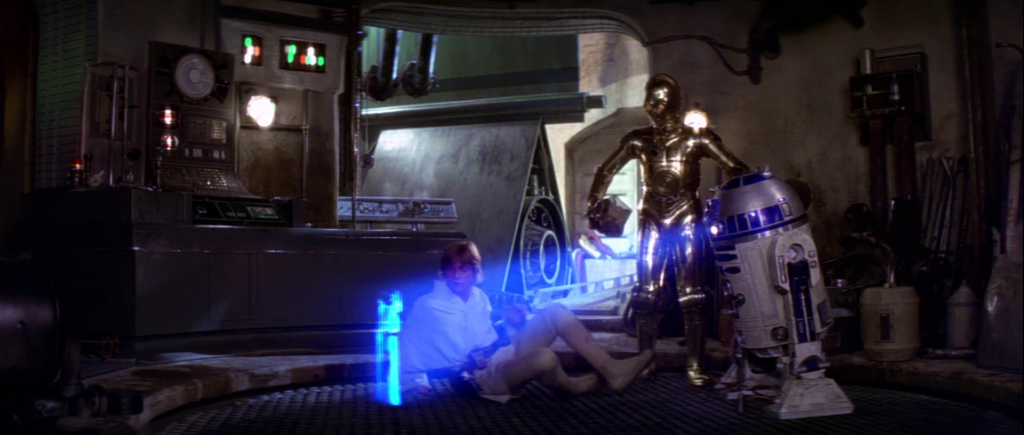

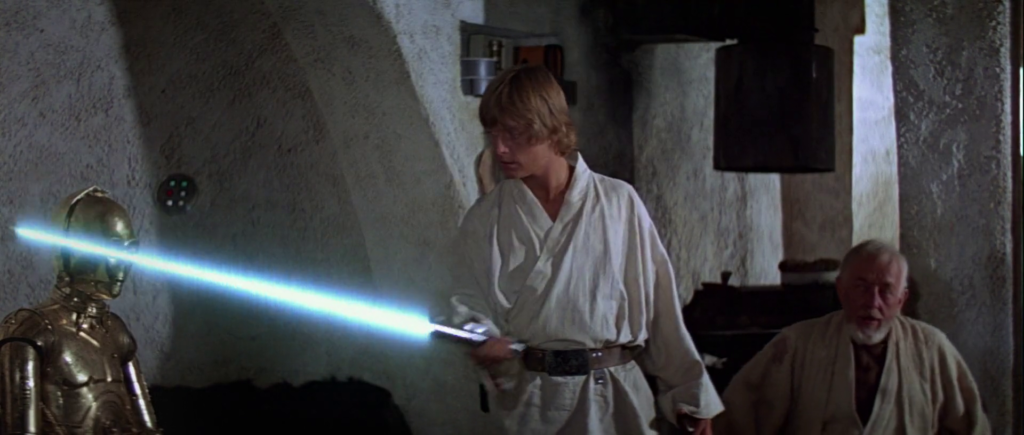




Star Wars Episode IV: A New Hope (1977)
Film review #500
Director: George Lucas
SYNOPSIS: A long time ago, in a galaxy far away…the plans for the evil galactic empire’s new battle station are stolen by the rebel alliance and placed in a droid to escape to the planet Tatooine. Luke Skywalker comes into possession of the droid and discovers a hidden message about the plans. With the droids in tow, Luke sets off to find Obi-Wan Kenobi and learn the ways of the force to bring down the empire, led by the ruthless Darth Vader…
THOUGHTS/ANALYSIS: Happy 500th film review! It’s been a long road to get here, and many hours have been invested into watching the best and worst (mostly the worst) of science-fiction films from all over the world over the last ten years. The plan was always to save this one for the 500th review, because I have famously never watched any Star wars film all the way through, and I have never had any real interest in the franchise, so this is a big milestone for me. So let’s take a look at why the film was so successful, why I was never interested in it, and whether actually watching the film has changed my mind shall we?
Star Wars (subtitled Episode IV: A New Hope after the initial cinema release) is a 1977 science-fiction film directed by George Lucas. It is the first film released in the Star Wars franchise. The film starts off throwing us right in the middle of a story, as outlined in the title crawl: the rebels fighting the evil galactic empire have uncovered the plans for their ultimate weapon: a gigantic space station that can destroy planets. Princess Leia hides the plans in a droid, which is then sent to the planet Tatooine and picked up by a young farm hand named Luke Skywalker. Determined to deliver the message and plans to one Obi-Wan Kenobi, and embark on an adventure to save the galaxy. Originally released as a stand-alone film, Star Wars really throws you right into this “galaxy far away” without much establishing. However, as the film opens up with an entertaining action sequence that shows off the world and its inhabitants better than any exposition could do. The story is pretty much a simple “good vs evil” plot, and I feel like it’s a waste of time trying to find any deep allegories in the world or characters. maybe George Lucas tried to build something more deeper and significant in his constant re-edits (more on that later), but taking the film as a stand-alone feature, it sets its scene around it’s characters fine, but when they talk about the galaxy at large with regards to the senate or whatever, we don’t see or hear much about it, which is a bit disjointing. Personally, I was never too interested in the world-building of Star Wars as this “galaxy far away” was a bit too disconnecting for me as a kid, and especially with their being humans there as well just made no sense. Maybe it’s a small point to get hung up on, but that was the kind of kid I was.
So after the first action scene, we start following the two droids that escape with the plans: C3PO and R2D2. We follow them for…quite a while actually: nearly half an hour of their bickering back and forth before the film moves on. honestly, I think the beginning could have been easily shortened to improve the flow of the film. If the aim was to show the droids and how they fit into the world, then there is certainly some of that in the beginning, but it isn’t really furthered in the latter part of the film. for example, there seems to be a deliberate show of how droids are treated as second-rate beings by humans in the beginning as if droid discrimination is rife in this galaxy, but it is completely forgotten about when the human characters become the centre of the story, and never confronted in the film. Maybe it would have been good for the contribution the droids made in defeating the empire could have been recognised and changed people’s attitudes towards them, but that doesn’t happen. Again, the film is basically a good vs. evil story that introduced a lot of things in passing, but were further explored in subsequent films and other media.
One thing I noticed about the story is a lot of the plot points are strung together by a chain of massive conveniences. The droids are on a ship, which coincidentally has the man they need to find, and are caught and sold to Luke, who just so happens to know Obi-Wan Kenobi, and so on. It’s not really an organic method of storytelling that is quite absurd the more you think about it, and that’s even before you take into account the lore from the prequels and how Obi-Wan should know who C3PO and R2D2 etc.
It is well known that George Lucas was inspired by watching the film serials of the 40s and 50s when he was a child, and that heavily influenced the likes of Star Wars and Indiana Jones. The fairly simplistic nature of the Star Wars “Good vs. evil” story does feel like it could have been the basis of such a serial. The characters too, are reminiscent of that: the characters are all white men, with one woman in the entire cast. Luke is the “blank slate” protagonist that people are to identify and project themselves into as he explores this new world with the viewer. Han Solo is the more typical, action-focused lead, and Leia is the only female character that unsurprisingly needs to be rescued. Darth Vader takes the role of the “masked villain” whose identity was often kept secret until the last chapter of the serial. His appearance is also highly reminiscent of the serial villain “The lightning” from The Fighting Devil Dogs: Who could fire lightning from his hand (A power not shown in this Star Wars film, but is in others), and flies around in a triangular plane that you could say is similar to the “star destroyer” ships seen in Star Wars. It’s difficult to say just how much of an influence these had, given that there would have been no way to re-watch these serials or dig up any information back in 1977 when there was no home releases, but the similarities are way to striking in some regards to be dismissed as coincidence. There is some effort to give some of the characters a more unique personality: Han Solo has a bit of an anti-hero edge that’s not too unique, but his character and performance by Harrison Ford are definitely memorable. Princess Leia too, while still being the sole female character that needs to be rescued from being kidnapped, but her snide remarks, constant backtalking and her eagerness to get stuck in the action with the guys definitely set her apart from the trope she finds herself in. I’m not sure the title of “princess” really helps her character in this respect though, as it isn’t really explained what or where is is supposed to be a princess of. nevertheless, Carrie Fisher’s performance is definitely a stand out from an acting perspective.
There was apparently very little faith in Star Wars being a success, and George Lucas was given a “small” budget of eleven million dollars to work with, which in 1977, while not a big budget, is not nothing. What the film creates is a very unique aesthetic: not the pure, sterile white that is expected from sci-fi (most of the time), but a world covered in grime and dirt, and that feels lived in. The detailed textures on the models of the ships really bring the scenes to life, and it’s pretty impressive how much detail they get on them. there’s definitely a distinct vision in the film’s aesthetic, and for the most part, it is brought to life with no big complaints. The big budget film score by John Williams also provides a lot of memorable acoustic moments.
I should probably mention something about the edits to this film: George Lucas has made many modifications to this film is particular since it was released as a standalone film in 1977. Some of them are cosmetic and actually enhance the world, such as recolouring and adjusting contrast on some of the scenes and models, which I think helps them stand out a lot better. Some of the additions though are pretty pointless, and sometimes harmful to the film. The constant reworking of Han shooting Greedo first is infamously silly and in my opinion just didn’t need to be done. The added CGI characters in some of the establishing shots look really outdated and out of place in the film, and while I get that they are there to make the world more busy, it just ends up being distracting. The added scene with Jabba the Hutt was cut from the original, which I think made sense, as it messes up the reveal of the Millennium Falcon when we see it with Luke for the first time. Out of all the changes, I still don’t get why all the dialogue with Luke being attracted to Leia wasn’t altered or removed, since it’s just weird when we know they are revealed to be siblings in the sequels (spoilers, sorry). I know that they also don’t have any idea about their relation (I don’t think they were supposed to be related when the film was written, but it still seems a bit odd that the whole thing has been left untouched while so much of the rest of the film has been cosmetically altered for no real benefit.
Overall, Star Wars Episode IV: A New Hope is a perfectly serviceable film about good versus evil in a science-fiction setting. It has it’s own unique aesthetic and vision, and adds in enough character development and drama to make it interesting for viewers of all demographics. the influence it had is undeniable: it was a landmark moment in sci-fi that allowed the genre to be taken seriously again, after the low budget, b-movie monster films of the 60’s. However, I do still hold the opinion that part of that was good timing on the film’s release, rather than anything in particular that the film accomplished: it was expected to be a mediocre performer that no one wanted to take a chance on, and I think science-fiction fans were waiting for a film like Star Wars to get into. watching the film properly hasn’t changed my opinion of the franchise, and I’m not suddenly interested in watching the other films or exploring the franchise (although I will get around to viewing the other films eventually), but yes, it is a decent sci-fi film that breathed new life into the genre and was able to fire people’s imaginations, as well as being entertaining. There are plenty of problems with it though, such as the ridiculous reliance on chance encounters for plot convenience, some wobbly acting in parts, and pacing, so all in all, it has done little to sway me, but I see why people would and could enjoy it.
-
#499 – Destination Space (1959)
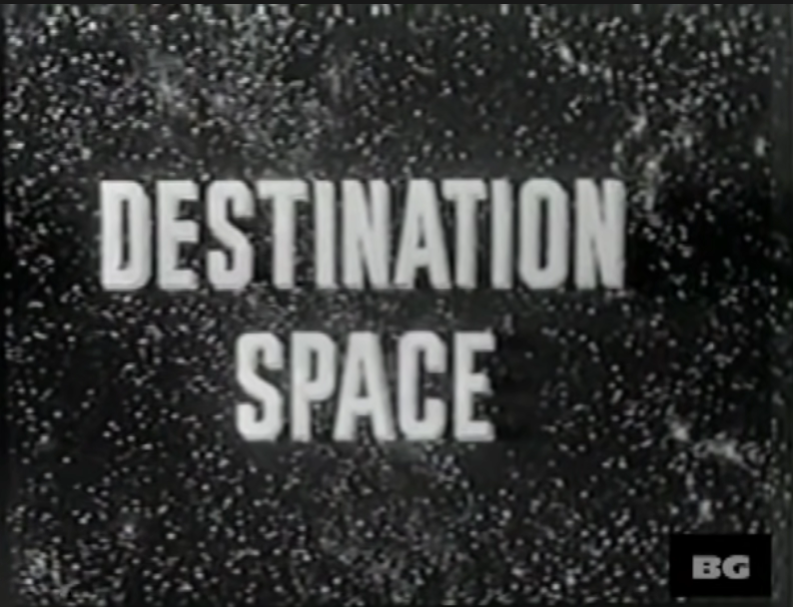
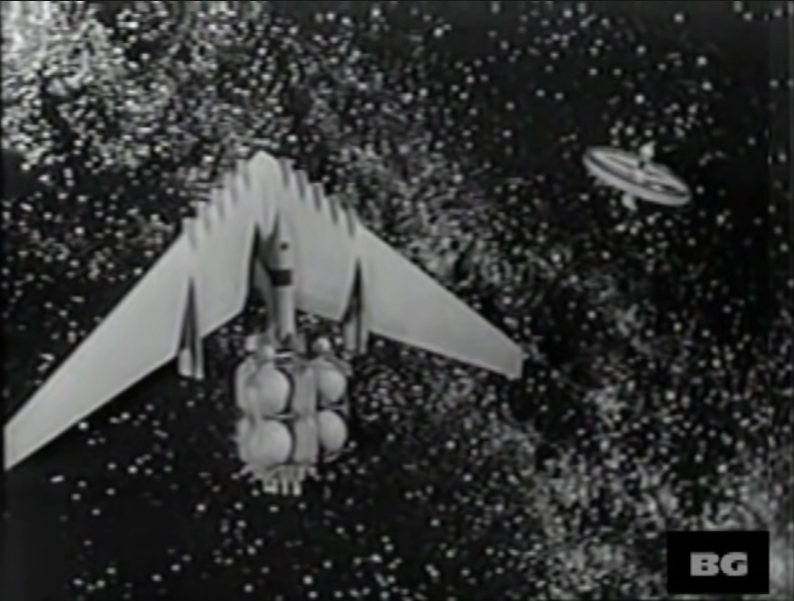
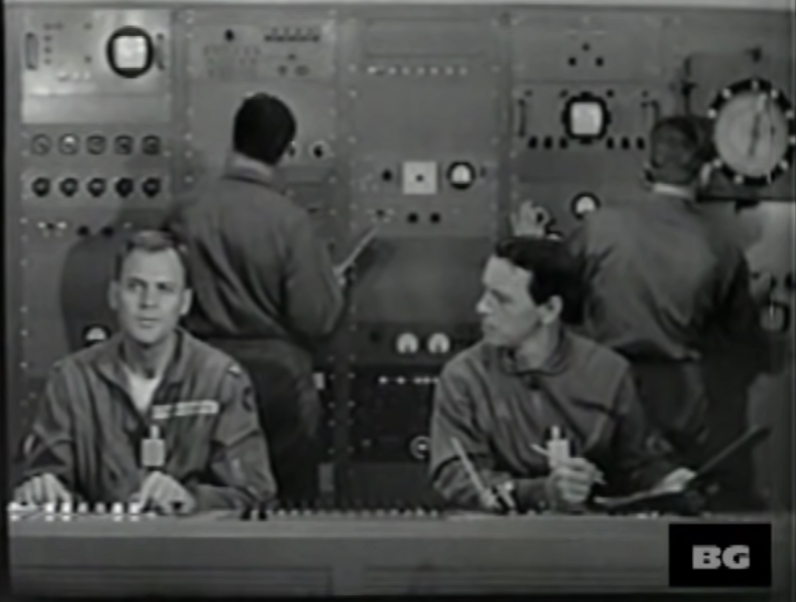
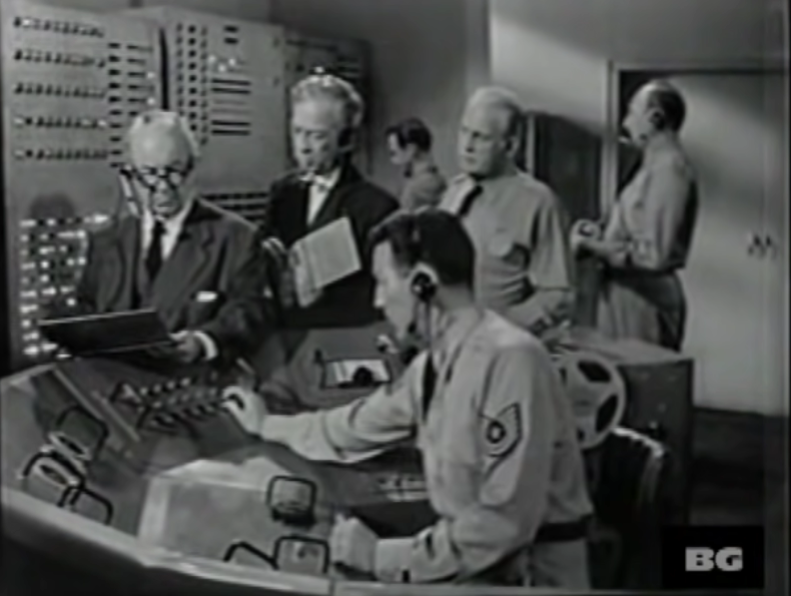
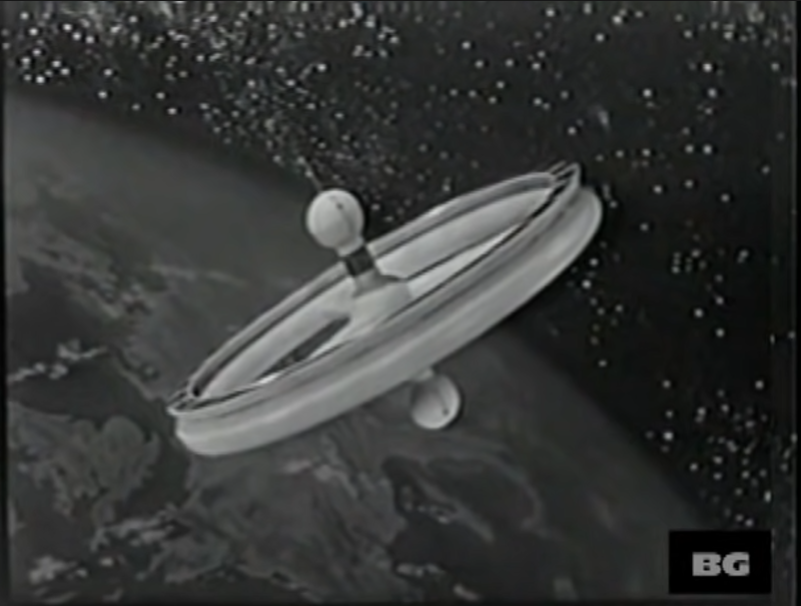
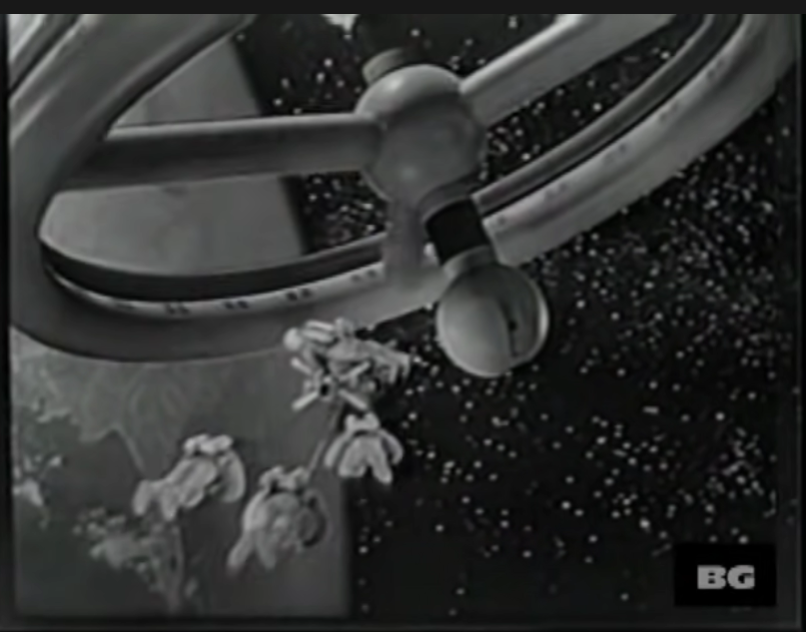
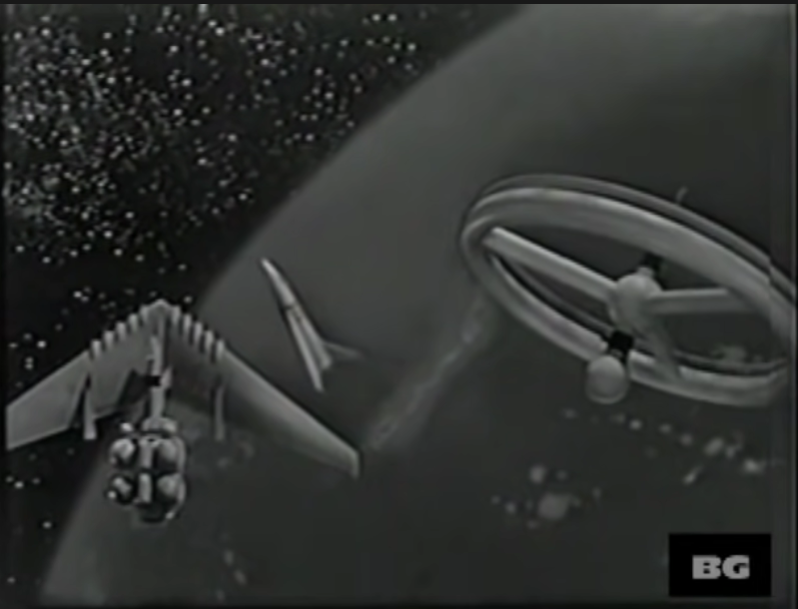
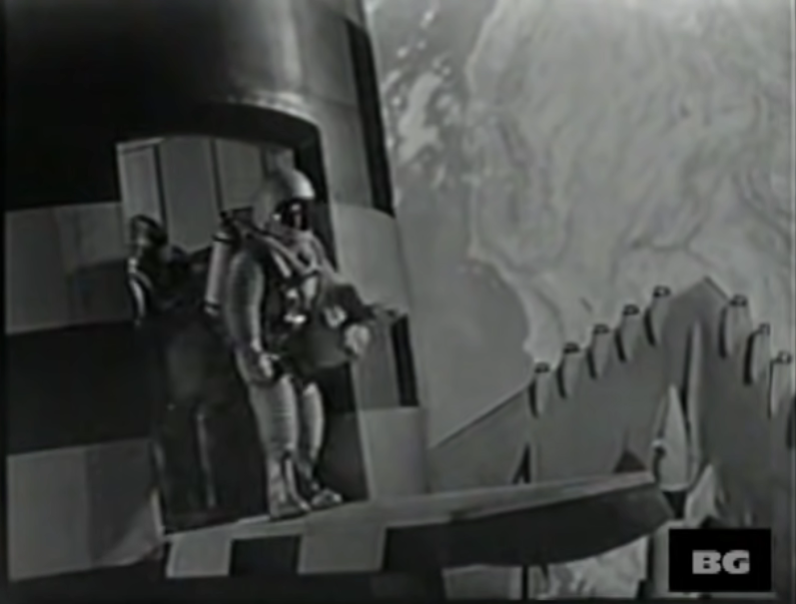
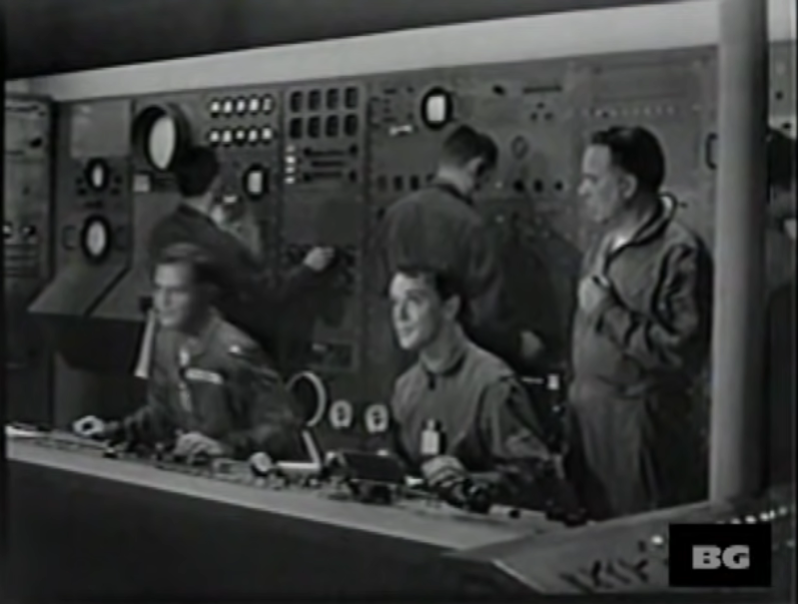
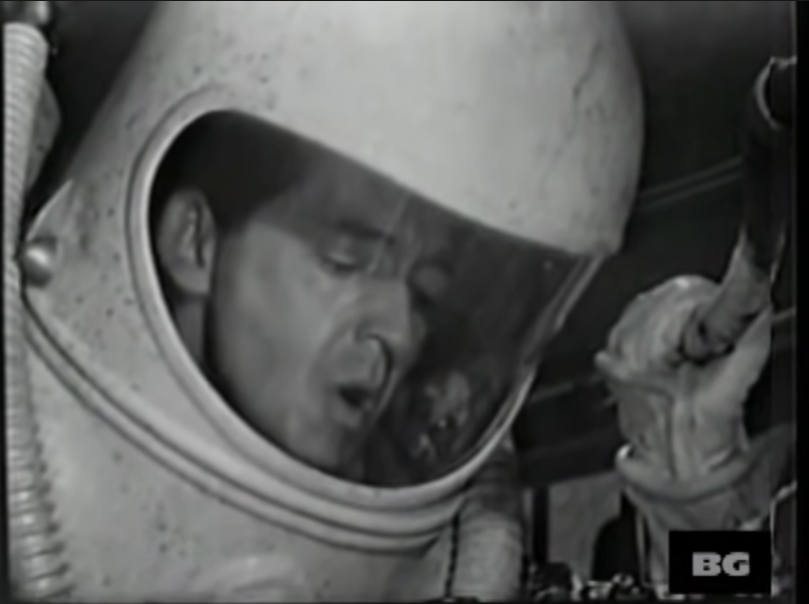
Destination Space (1959)
Film review #499
Director: Joseph Pevney
SYNOPSIS: On board an orbital space station, the launch of a new spaceship is aborted when a meteorite crashes into the station. Jim Benedict, director of the United States space programme and person in charge of the station, appears before a Senate committee hearing, attempting to justify the continued operation of the space station, despite resistance from, in particular, senator Royce…
THOUGHTS/ANALYSIS: Destination Space is a 1959 sci-fi television film that was intended as a pilot for a TV series, but the pilot was never picked up by the networks. The plot concerns the role of Jim Benedict, head of the U.S. space program, and an orbital space station designed to launch spaceships to the moon. After a meteorite strikes the space during a test launch, he faces renewed opposition to his plan, with to being described as a waste of money and too risky. Being a TV pilot, it is only fifty minutes long, and so has to fit a fair amount of content into it: the opening five minutes is decent enough, and provides enough backstory to what’s happening, with a bit of drama and suspense too. However, here is the one big problem with this film/pilot: I don’t know what the purpose of it is. They talk a lot about getting a spaceship to the moon and landing people there, establishing a colony etc. but the film doesn’t get anywhere near doing that, and instead focuses on committee hearings and inter-personal drama that isn’t particularly interesting. I suppose back in 1959 when this film was made the concept of landing people on the moon and space travel would have been more interesting because it had not been accomplished yet. The focus is not on the speculative or science-fiction aspects though, but instead rendering the logistics of space travel into a drama: the film spends more time in a senate committee hearing than it does in space. As a self-contained film it has no real climax or payoff, and no real progress is made on the objectives, which I suppose would have been part of the TV series if this pilot would have been picked up. However, I’m not sure where the TV series would have gone in that respect: would they have gone to the moon eventually? What then? More committee meetings? In making the premise so grounded and “realistic,” there seems very little scope for development and possibilities with the set up. As such, I can see why as a pilot it was not picked up for a full TV series.
The characters are a typical cast that aren’t particularly interesting or memorable. Jim Benedict is the typical male lead, like the type yo9u would see in the B-movies or serials in the 50’s: embodying the all-American ideals of ambition, adventure and such forth. The female characters solely exist as love interests for male characters, notably Jim’s girlfriend June and his buddy Dave’s girlfriend Kim. Kim also randomly confesses her undying love for Jim too, setting up a love triangle which really adds nothing to the story. I suppose there’s an effort to keep the characters grounded in line with the “realism” of the story and drama, but not making the drama between the characters compelling really leaves nothing for the viewer to hook onto.
There’s some ambition in setting the scene for the film/series; the models of the space station and shuttle orbiting earth are compelling enough for the time, though nothing special. The interior sets too are full of detail, which makes it stand out to me against the swathe of b-movies which looks like they were made on a shoestring budget. Overall though, it is easy to see why Destination Space did not get picked up for a TV series: while some of the visuals are interesting, there’s not any real indication of where the series would go other than more boring senate meetings. The decision to focus on drama and the realism behind the ideals of the space race doesn’t really offer anything because the characters are dull and uninteresting, without any unique traits to invest in. As a standalone film, it doesn’t offer the typical plot of a problem, a flowing narrative and climax, and is just really boring. Maybe it would have been of more interest at the time when the space race was more in the national conscious, but it’s got nothing to offer this long after the fact.
-
#498 – The Zohar Secret (2016)

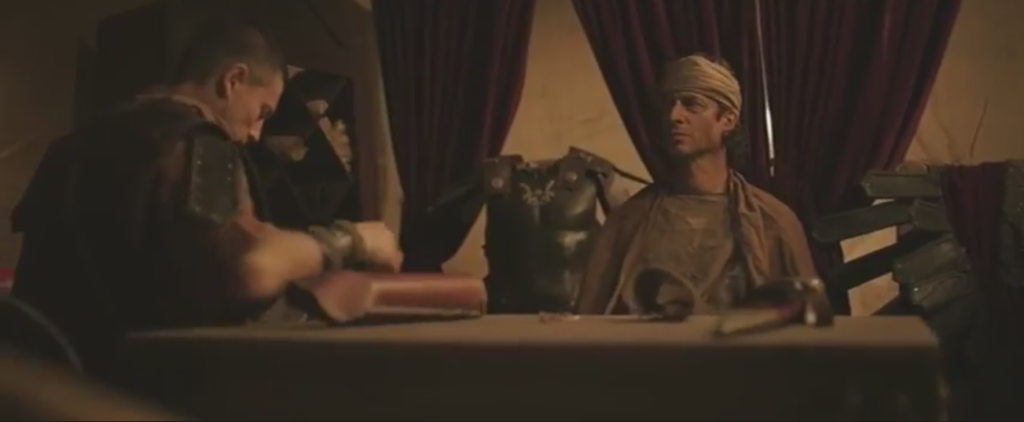
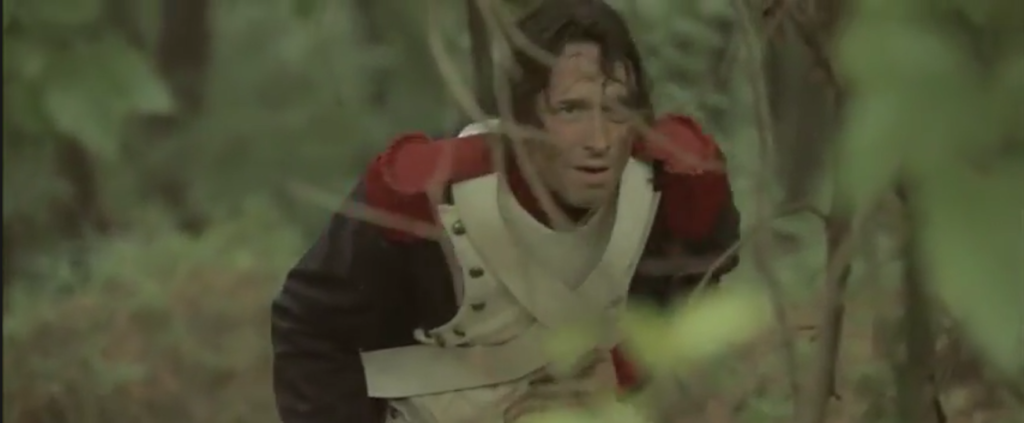
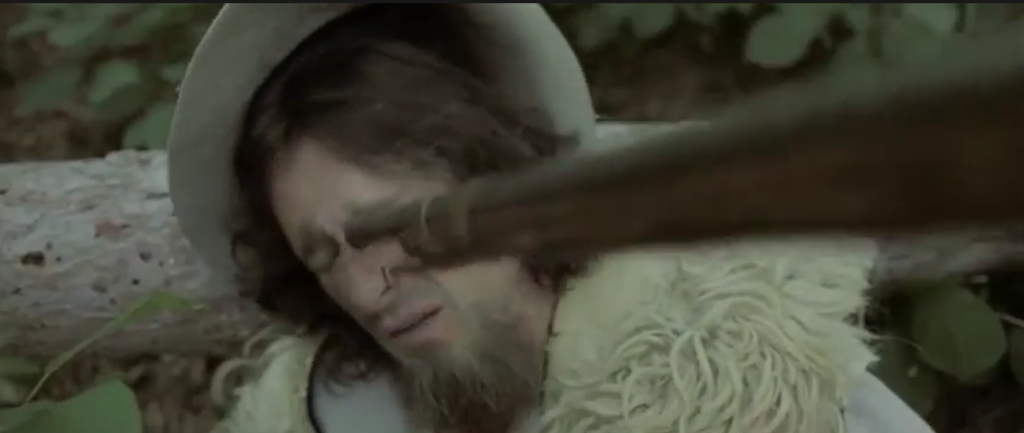

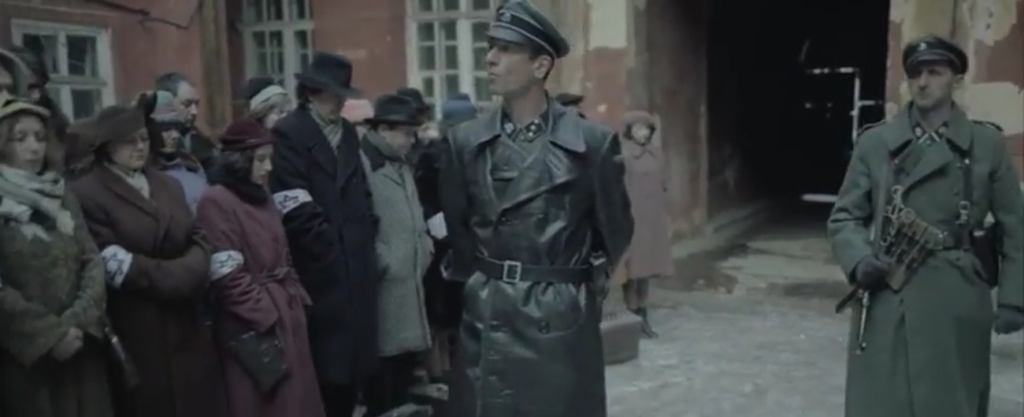
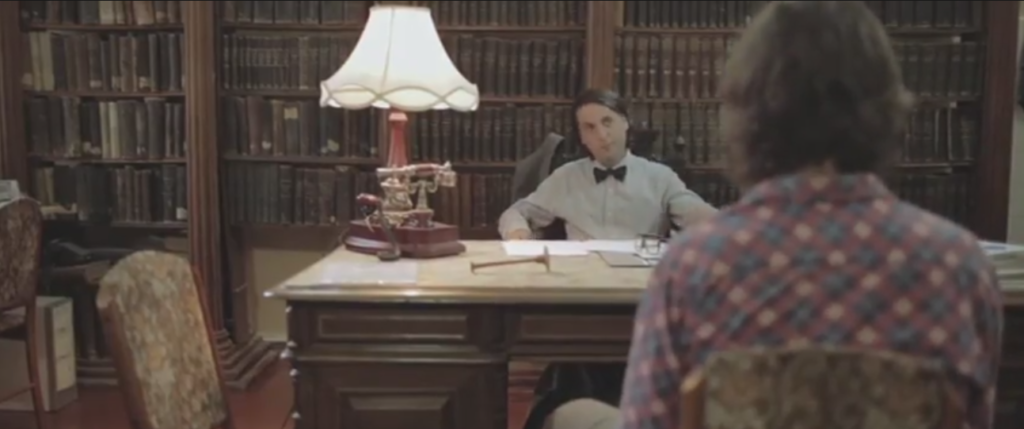
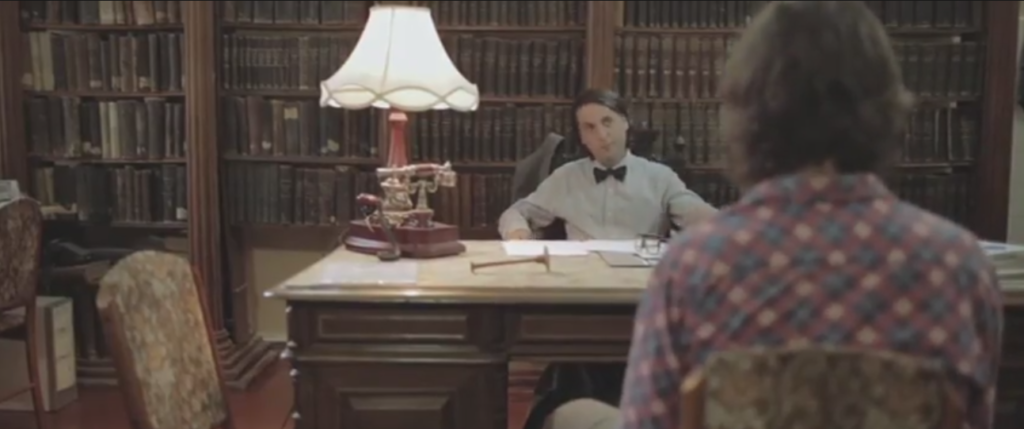
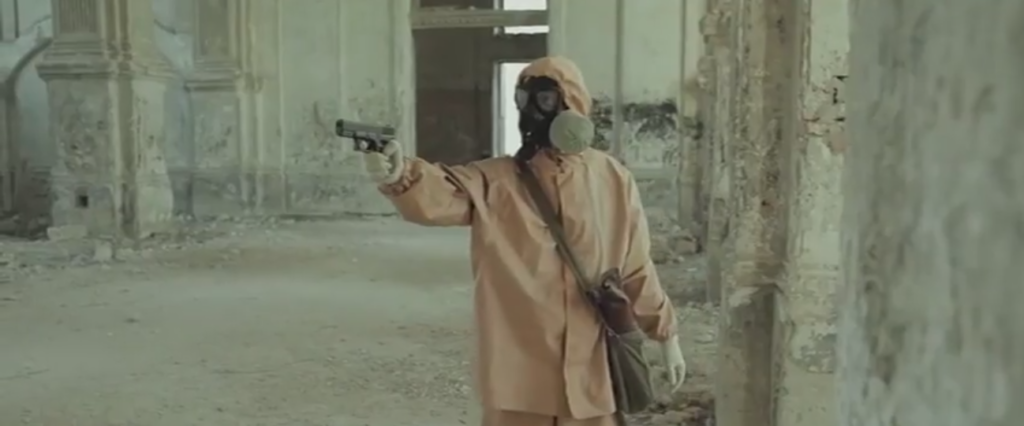
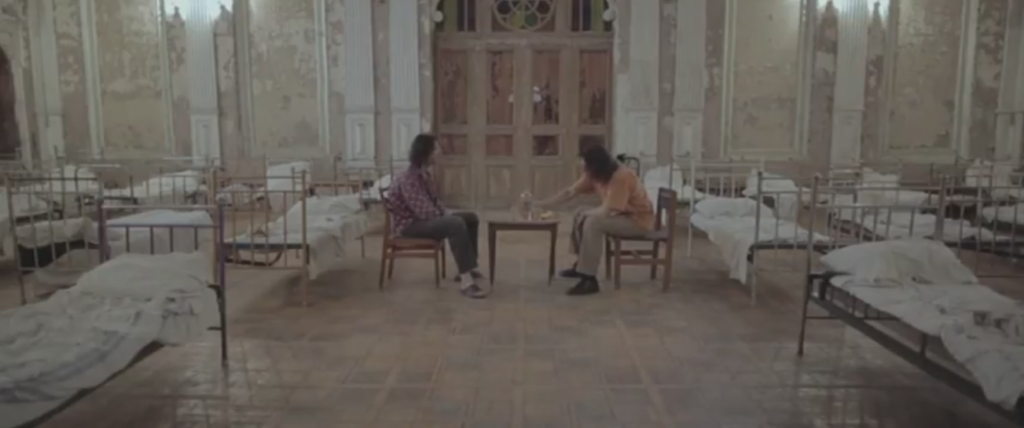
The Zohar Secret (2016)
Film review #498
Director: Vladek Zankovsky
SYNOPSIS: Max finds himself in possession of a scroll that contains the secret to transcend earthly existence and enter the next dimension of being. He is constantly being reborn in different eras of history, but always with the same task: to return the scroll to Jerusalem, where the rest of the scrolls in the collection have been buried.
THOUGHTS/ANALYSIS: The Zohar Secret is a 2016 Ukrainian film. The film centres around Max, who is constantly reborn across history with the constant mission to return a scroll to Jerusalem that supposedly contains the instructions to enter the next dimension of being. The backstory concerns how the scrolls were created by those opposed to the Roman Empire, and the history of humanity took a different turn with them, and so the scrolls were all buried apart from the one that Max now holds. Max is tasked in each of his reincarnations with returning the scroll, aided or frustrated by himself, who is usually on the other side of the historical conflict he finds himself in. The backstory is…intriguing, if a bit all over the place. The premise is interesting, and is set out in the introduction fairly clearly, but it is one of those films where the details and what everything means overall are deliberately left open to interpretation. Despite jumping through many periods of history, the film flows well and is simple enough to follow. The constant changes keep the film interesting too, even if each scenario is more or less the same. That, however, I think is one of the points: that in a lot of the different historical periods, Max is confronted by a version of himself, who is on the other side of history. This gives the impression that the constant struggles of history are endlessly repeating the same scenario of one side versus another ultimately ends up nowhere, and humanity never progresses. I think this message is gone through pretty well, and the different historical periods are rendered pretty nicely. There is often a comedic undertone to some of the scenes that amplifies this too, which again reinforces the idea that these conflicts are meaningless. Although I’m not sure whether this is actually intentional, because I’m not sure what the intention for the film actually is.
The overall tone of The Zohar Secret is very mixed and a little bit of everything: sometimes it feels like a philosophical film about mankind’s existence that is meant to be ambiguous about it’s objective. Sometimes the serious scenes are punctuated with some comedy, which trivialises the philosophical themes, but as mentioned above might be a part of showing the pointless of human conflict. Sometimes the comedy and the seriousness are pressed right against each other, most notably in the scene where Max is an SS officer in World War II, and his counterpart is a Jew. There’s a somewhat dark comedy in the whole set-up, but I’m just not sure what is meant to accomplish.
The film is very cleanly split into two parts: the first part is all of the aforementioned travelling through history mentioned above; the second part comes in at almost exactly halfway through as Max is reborn again, this time in a psychiatric hospital, where it turns out everything that had previously happened was a figment of his imagination, and he had admitted himself there to try and get better. This part of the film has the objective of undoing everything we learned in the first half of the film, and Max (along with the viewer) are attempted to be persuaded that everything that happened was a delusion. The characters in the hospital are all people Max met throughout his historical adventures, and everything is rationalised in the next hour of the film’s runtime, so you can reasonably be of the conclusion that it was all a figment of Max’s imagination. This part of the film isn’t as interesting as the first part though, and although everything is rationalised, it’s just not as appealing as the motivations given in the first half. Again, maybe that is intentional, to suggest that there is more to existence that what can be justified or rationally explained, but if that is the case, a more subtle approach might have been better. The setting of the hospital lends itself to more comedy, and the characters become more slapstick, and flashbacks add a spin on earlier scenes that interprets them as comedic farces, rather than historical battles. The final part of the film suddenly throws up the fact that the whole thing wasn’t just a figment of Max’s imagination, and because he chooses ultimately to hang on to the actual delusion of having a wife and child, he is sent back in time to do the whole thing again, presumably ad infinitum until he makes the right choice. If the film’s objective was to leave the ending ambiguous about what is real, it does not do that, because Max being sent back in time shows that the whole ordeal is real, and we are given no more insight into what this next dimension of being could be.
Overall, The Zohar Secret is a bit of a mess, but it still manages to be entertaining for the most part. I think the film wants to be a deep, philosophical film like 2001 about the nature of human existence, but it throws in a lot of drama and comedy that muddles the point rather than maintains it’s needed ambiguity. It hurts itself too in over-rationalising what it delivers, which probably could have worked if it wasn’t so heavy-handed. The parts I thought were interesting, such as the rendering human conflict as an endless repetition of the same ideas, I’m not sure were actually intentional or not. The clear-cut division of the film into two halves again undermines the film’s needed ambiguity. So yes, it’s mildly interesting and entertaining, but as what the film is aiming to be, I have no clue.
-
#497 – Wahan Ke Log (1967)



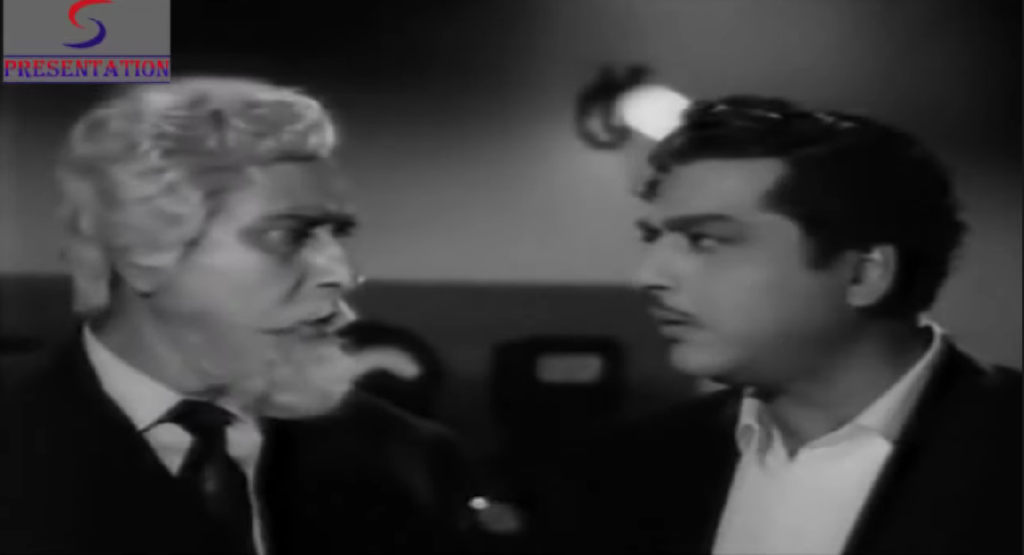






Wahan Ke Log (1967)
Film review #497
Director: Nisar Ahmad Ansari
SYNOPSIS: Martians are contacting and blackmailing various wealthy people to hand over their diamonds. Agent Rakesh is assigned to investigate these Martians and put a stop to them.
THOUGHTS/ANALYSIS: Wahan Ke Log is a 1967 Indian sci-fi film. The film revolves around a case concerning Martians contacting various wealthy individuals to blackmail them into handing over their diamonds, in preparation of an invasion of Earth. When the head of the central intelligence services is killed by these Martians, agent Rakesh is assigned to the case along with Neelkanth, a private detective, and they travel to Bombay to commence their investigation. This film is an interesting mix of things: it has the fundamentals of a typical Bollywood film with the romance, drama and musical and dance interludes, but also intermixed with a plot reminiscent of the James Bond 007 parodies and imitations that emerged (predominantly in Europe) around the time. The sci-fi element concerning the aliens and spaceships has the feeling of a Hollywood b-movie too, so combining all of these different genres gives the film a bit of a unique feel. With all these different things going on though, the film feels a bit disjointed as it moves between the different aspects of the story, and there can be large gaps between certain elements don’t factor in. The central story is fairly robust though, and has some twists and turns that drive the plot and characters forward. The mystery surrounding the aliens is likewise one that maintains viewer interest, but is neglected over parts of the film.
The tone of the film moves between a more traditional Bollywood drama/romance and more of a comedy. As mentioned, it reminds me of the 007 parodies and imitations that came out in the late 1960s. Rakesh himself embodies both the romantic male lead, and also a comedic fool. However, Neelkanth usually takes up the comedic role as the jester-like sidekick for himself, leaving Rakesh to deal with situations like living with his overbearing Mum pressuring him to get married and such. Anita as the love interest is fairly passive and has a very traditional role as such. The villain Anil Chakravarty is a gangster who has kidnapped the scientists of the world to construct machines to prepare for the Martian invasion of Earth, and he is definitely presented as a typical Bond villain who has his own mystery about him.
The film has many of the lavish Bollywood song and dance numbers you would expect. I’m not an expert on Bollywood music and films, so I can’t really compare them to others, but they do the job. The sci-fi elements such as the aliens, UFO’s, and sets are all very reminiscent of the b-movie productions I have mentioned, and in that context, they are fairly well done. The UFO’s are decently detailed, and the sci-fi sets have plenty going on in them, so they are interesting enough for the purposes of the film. Overall, Wahan Ke Log is an interesting mix of genres with a capable story, but it’s really nothing more than a novel bit of history at this point.
-
#496 – Captain Nemo (1975)
Captain Nemo (1975)
Film review #496
Director: Vasili Levin
Just when you think you’ve reviewed every adaptation of 20,000 Leagues Under the Sea…
SYNOPSIS: Following sightings of a mysterious giant creature in the oceans targeting various ships, Professor Pierre Arronax takes a voyage on the Blue Star liner to hopefully encounter and figure out the nature of this supposed beast. However, when the ship encounters it, an attack knocks the Professor, his servant Conseil, and harpooner Ned Land overboard. They awake and find that the sea monster is not a monster at all, but a submarine called the Nautilus, within which they are now captive under the supervision of Captain Nemo…
THOUGHTS/ANALYSIS: Captain Nemo is a 1975 three-part TV movie, and an adaptation of Jules Verne’s 20,000 Leagues Under the Sea. The plot of the film follows the original novel fairly closely, with Professor Arronax, his manservant Conseil, and harpooner Ned Land being swept overboard from the ship they are on to find themselves rescued by Captain Nemo and his submarine the Nautilus. Thus starts a series of adventures as the captives explore with Nemo the oceans of the world and it’s inhabitants. With a runtime of nearly three and a half hours, the film takes its time in establishing the setting and characters, and bringing the novel to life. It does omit some of the more fantastical (exploring Atlantis etc.) parts of the story and instead keeps it grounded, which a lot of the adaptations do admittedly, so that’s nothing special. With such a long runtime, the film does feel a bit too grounded, and there’s a lack of variety as the captives are confined to the Nautilus apart from the odd excursion under the sea. As such, the adventure aspect falls a little flat. The film does go into a bit more detail regarding Nemo’s past and the suffering of his family and people by colonial forces. The original novel kept things fairly ambiguous regarding the nationality of the forces, but the film here identifies them as British; which would have been accurate, since Nemo is meant to have been a prince in India, and it was British forces which occupied it. The film also casts a similarly critical eye on the Spanish conquest of the Incans. I suppose since the film was made in the Soviet Union they were more inclined to explicitly show the cruelty of Western colonialism and name the specific nations involved.
The characters from the novel are all faithfully represented, and the movie doesn’t really change their personalities, and neither does it need to: Arronax is the astute, analytical scholar, his manservant Conseil serves as a bit of comic relief (although it is much more muted and slight compared to other versions which make it more explicit), and Ned Land is the brawly, short-tempered type who directly contrasts with the rational Arronax and the stoic Nemo. The characters are portrayed very well with regards to their strengths, but they do again feel a little too grounded and as such never evolve past their starting points. Like the novel, and many of Jules Verne’s stories, there’s a noticed lack of any female characters; the only one being Arronax’s wife, who we see sparingly as she receives news about the fate of her missing husband.
The settings of the film are nicely varied: the flashbacks set in India and France feel authentic and lively. The Nautilus sets are very detailed and full of activity, although you see so much of them you might think you’re being held captive on the Nautilus too. The diving suits used for the ocean walk scenes look suspiciously like space suits, which makes me think they’re leftover props from a sci-fi film (probably one I’ve reviewed at some point). The underwater footage is a combination of stock footage and an indoor pool dressed as the ocean, which still looks pretty decent.
Overall, Captain Nemo is a fairly decent adaptation of the popular novel, and although it offers an accurate representation of the characters and settings, it lacks a spirit of adventure and the more fantastical elements that are a crucial part of the stories success. There’s obviously plenty of effort and care that has been put in to making this version, and it’s fairly solid. If you want a more streamlined cinematic experience though, you might be better off with another version (there’s plenty of them).
-
#495 – Aerograd (1935)
Aerograd (1935)
Film review #495
Director: Aleksandr Dovzhenko
SYNOPSIS: In eastern Siberia, a remote village is under threat from Japanese invasion, as well as the Soviet army planning to build Aerograd, a city of the future in the area. Stepan Glushak, a resident of the village and renowned soldier, must embark on a mission to protect his village.
THOUGHTS/ANALYSIS: Aerograd (Also called Frontier) is a 1935 soviet film. The film centres around a remote village in Eastern Siberia, which is caught in between Japanese invaders, and the building of a new modern town called Aerograd under construction by the soviet army. Stepan Glushak, who was born in the village, returns to tell them of the new town, but is met with resistance by the superstitious locals, who fear change. The plot of the film is pretty threadbare: as with most soviet films from the time, this is nearly all just propaganda. There are numerous, extended speeches glorifying the red army, and songs singing its praises to the footage of fleet of soviet aircraft. Stepan tries to convince the residents of the village not to fear the soviet union, but they are sceptical, God-fearing people who fear change. It’s a simple premise, but one you can easily understand, and offers a solid base to sing the praises of the red army as they take out the invading Japanese forces.
The characters are fairly one-dimensional and uninspiring: Stepan embodies the soviet cause, and is the stoic, burly and heroic male lead. The residents of the village by contrast are portrayed as superstitious, irrational and old-fashioned in their fear of the red army. The Japanese, likewise, are overly-emotional and overacting to make them seen as different as possible. The Japanese soldiers are referred to as “Samurai,” even though they don’t have the traditional samurai armour or attire. I wonder if that’s a misconception that all Japanese soldiers are samurai that was held back then, but I can’t be sure. Either way, the purpose of the film definitely is not to accurately represent Japanese culture.
The cinematography of the film is perhaps it’s strongest point. There’s lots of expansive shots of the Siberian wilderness: a place that very few people would have seen on film or in person at that time. The cuts between cameras within scenes is also smooth and well done, particularly considering the scenes shot outdoors, and done when most scenes only consisted of a single camera. The footage also of fleet of airplanes, including being film from the planes themselves, is also quite well done. It’s difficult with these sorts of films to get to any kind of message the film has underneath all of it’s state-mandatory propaganda, and Aerograd is no exception. There’s some opinion that there’s some anti-Soviet sentiments that are hidden underneath the surface, but again, it is very difficult to make out. You could argue that the whole situation of Stepan abandoning his village for the glory of the Soviet Union paints him as a villain, and that certain moments of hesitancy regarding him killing his childhood friend open up a space within which things can be questioned by the viewer, but it is all very slight, and nothing concrete (but that would be by design, as any more obvious anti-Soviet sentiment would not have made it to film). It’s perhaps pretty easy to dismiss any Soviet Cinema as being simply propaganda, but there’s still plenty of decent films from the era that have a decent story etc., but I don’t think Aerograd is one of them.


